#Speed Limit (20 Kmph - 30 Kmph
Explore tagged Tumblr posts
Text
United States one wheel electric scooter market size reached USD 182.4 Million in 2024. Looking forward, IMARC Group expects the market to reach USD 371.7 Million by 2033, exhibiting a growth rate (CAGR) of 8.1% during 2025-2033.
#United States One Wheel Electric Scooter Market#United States One Wheel Electric Scooter Market size#United States One Wheel Electric Scooter Market share#United States One Wheel Electric Scooter Market forecast#United States One Wheel Electric Scooter Market Report by Product (Electric Unicycle#Electric One Wheel Hoverboard)#Speed Limit (20 Kmph - 30 Kmph#30 Kmph - 50 Kmph#More than 50 Kmph)#Distribution Channel (Online#Offline)#Application (Off-road Activities#Daily Commute)#and Region 2025-2033
0 notes
Text
Learn the Types of Electric Scooters
Young children prefer electric scooters to transport them around town for short trips and for easy, fun work. Electric scooters are the most convenient and affordable mode of transportation. They can be parked anywhere, and they can navigate narrow lanes without any problems.
There are many kinds of electric scooters available. Some scooters come with a motor and a pedal that activates the seat. Some scooters don't have a seat or pedal, and can be controlled by the throttle. These scooters are designed for children under five years old who need to be able to stand and ride on the footrest. There are also scooters that can be used by people with disabilities. An electric scooter makes a wonderful gift for seniors and disabled people who depend on others for their entertainment and care. They feel like their legs are working again with these scooters. They can get water and go outside to get the newspaper or take their dog for a walk. These scooters can be operated by batteries and can be started by simply pressing a button. These scooters are slow, however xiaomi m365.
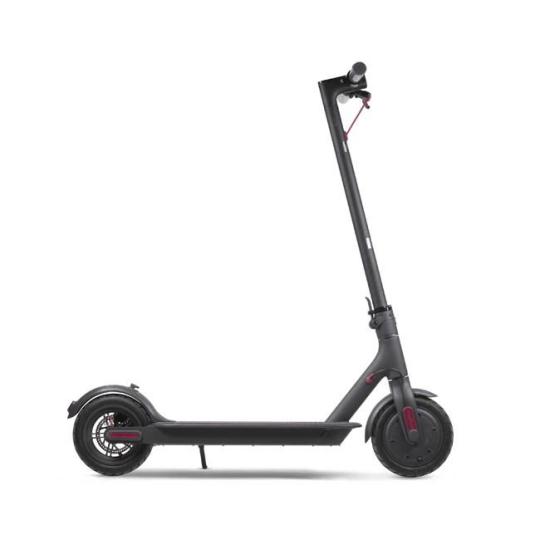
There are many types of electric scooters on the market. However, there is a selection that can be used for power riding. These scooters can travel up to 7-8km at a speed limit of 18-20 km/h. Many scooters look like mopeds and have features such as keyed ignition, quick swap battery packs and state of charge indicators. There are also foldable scooters. These scooters fold up easily and can be carried on a bus, train or car. They can also be pulled by the wheels if they run out of battery. These scooters fold up very small and can be stored in a corner. There are also electric scooters made in Italy that use petrol. These scooters could be described as a reduced photocopy Vespa scooters. There is a lot to be said for these scooters. Because the electric scooters do not have a fuel-activated engine like a motor scooter, they are lighter than motor scooters. The electric scooter's body is smaller than the motor scooter. The maximum speed for the electric scooter is 30 kmph. All the other features of a motor scooter, such as headlight, throttle, horn, and braking through control cables, are available on electric scooters.
0 notes
Text
ON INDIAN RAILS – WIDE PACIFIC STEAM LOCOMOTIVES AND REMINISCES THEREON
Prelude
Our country constitutes an early canvas upon which rail technology made significant advances, not only in usage, but also in spread. As consequence to these early advances, and well-considered policies to govern railways, we find, today, that we possess one of the largest railway networks of the world; one of the best run, considering its behemoth proportions; one of the most varied, even through efforts of standardization; unique in its operational precepts; glorious, in its chronicles, though interspersed with uncountable tragedies that we Indians, as sons and daughters of an ancient civilization, habitually ignore, for we have undergone many sorrows; and have learned, then, to look upon life and its vicissitudes with compassion without heartache; and partake thus, of many simple joys, in many degrees of detachment. So, Indian Rail remains India’s most beloved choice of transportation; the one upon whom Indians repose such dependence, that, even should our Gods fail us, our railways shall not.
An exhaustive history of the India Railways is not within the scope of this post; hence, I shall restrict myself to addressing the steam engines in the photographs that accompany this post. Ladies and gentlemen, what you observe constitutes the Indian Rail WP Class Locomotive. It remains India’s most iconic and most beloved class of steam locomotives; in days whence it attained fame and occupied a place of prominence, it was also known as “Canadian Steam”. It was the largest class of streamlined steam locomotive built anywhere in the world; one of the most powerful; could haul a 900 ton train at 70 miles per hour; occupies a central place as one of Indian Rail’s greatest success stories; was originally designed and built as “the train of tomorrow”; was technologically advanced; and yet, simple; and who does not recall that iconic, domed bullet nose? Let us then expand upon our story.
Wide Pacific, Indian Railways – The Engine
“WP” stands for “Wide Pacific”. The classification of “Wide” indicates that this was an engine for the Indian Broad Gauge, or, rails incorporating a width of 5 feet 6 inches; or 1676 millimetres. The letter “P” stands for “Pacific”. The prototype, built in 1947 by Baldwin Locomotive Works, United States, was type-rated as WP/P, or WP/Prototype; of these, 116 were produced. Onward, they were built by the Canadian Locomotive Company and by Montreal Locomotive Works, Canada, which together built 320; then Fabryka Lokomotyw, Poland, which built 30; and another 30 was built by Lokomivfabrik Florisdorf, Austria; and lastly, a prolific number produced by Chittaranjan Locomotive Works, India, which built 259 locomotives in all. The entire production cycle lasted through 20 years, between 1947 and 1967; the effectiveness of the design is attested by the sheer number of locomotives built – 755 in 20 years.
We cannot easily relate to numbers, unless told, that the total number of WP locomotives built by India alone, if coupled one behind the other, would constitute an unbroken train 6.1 kilometres long. If we conducted the same experiment with the entire number of WP locomotives built, we would have a train, unbroken, 17.8 kilometres in length. This however is arcane fascination; for the real magic remains in how these engines were run; a catalogue of sheer intuition conjoined with domain knowledge; of sheer, brute competence; of self-sacrificing and yet detached devotion unto duty; of hours of loneliness in exhaustion; also in exultation of knowledge that extraordinary lives were being lived; that nothing was mundane when a Driver was rendered as a natural extension of an awe-inspiring beast of legend which Providence had granted unto him to command.
This engine had a wheel configuration, also known as “Whyte Configuration��, of 4-6-2. This implies that if you saw it from one side, either side, the engine would show 2 regular wheels just aft of the fender and lifeguard; then, 3 large driving wheels underneath the boiler; and another regular wheel beneath the Driver’s cabin, just behind the firebox and grate. The engine, with tender, was 77.6 feet long; and exerted a total empty weight of 194.3 long tons upon rails, again with tender; engines made in India were weightier by 5 tons. Regular wheels were 3.7 feet in diameter; and driving wheels, 5.7, or 67 inches. Filled up, the engine-tender carried 15 long tons of coal and 25000 litres of water. Within the boiler, the total heating surface within superheaters contained an area of 271 square metres; boiler pressure was maintained, at its most optimum, of 251 pounds per square inch. Driving cylinders were 20.25 inches in diameter; 28 inches long; two on each side of the engine.
The WP Class Locomotive was especially suitable for Indian Coal, which is high calorific. When used in the production of metal, Indian coal is also known as “anthracite”; tends to be glossy, black in colour; burns with a fierce, white heat; has a high ash content.
The Principle
How is such a steam engine driven? I am afraid that this question may not be answered fully; not even if documented in thousands of pages; for an engine, when driven, other than in its essential principles of locomotion, depends entirely upon the individual perspectives and standpoints of each Driver trained to drive such an engine in varieties of different conditions. In short, every Driver had his own secrets as to how to extract the greatest effort from his engine. Thus every Driver had his own set of legends; and all claimed to be able to communicate with his engine as though by some mysterious, supernatural connection; and providential dispensation.
Let us try and consider driving fundamentals.
Fuel, or coal, is burned in a furnace; and the heat directed into a number of long pipes containing water through the length of the boiler; steam thus forms; and as it forms, increases in volume; is in turn firmly constrained in the limited spaces of these pipes, which are known as “superheaters”; thus increasing exponentially in pressure and temperature. In the meanwhile, it is incumbent to ensure that the furnace or firebox does not lose its efficiency; this is done through ingenious contrivances known as the “blower” and the “damper” along with the very specialised task of coaling the firebox; thus, is heat evenly spread through the entire superheating structure, pressuring the boiler as quickly as possible into its operating pressure, which, in the case of the WP locomotive, is 251 psi. The firebox is lined with bricks or with ceramic; a metal lining is entirely ill-suited, for it would melt in the incinerating heat.
Driving wheels, those large ones, are also known as “drivers”. They are driven by a set of levers, of which we are all familiar – indeed, these constitute one of the essential romances of steam engines along with the rush of hissing steam and bellowing smoke. These levers, also known as Connecting Rods and Coupling Rods, transforms the latent energy of high pressure steam into its potential; transferring this force unto the wheels. They are connected in an intricate co-arrangement between wheels and driving cylinders through another contrivance known as the “Walschaerts Valve Gear”; they are manipulated by the Driver through a mechanical device known as the “Reverser”, which manages the quantity of steam in the driving cylinders; this depends upon total train weight and speed. The optimum quantity of steam in the entire loop is controlled by the “Regulator”; or, in modern parlance, the Throttle. All of you are familiar with the Reverser; it appears as a large wheel in the Driver’s cabin; and we have often seen, in the days of our childhoods when steam engines were common, the Driver laboriously turning at the wheel. The Regulator was a large lever attached either to the engine firewall; or upon the floor of the engine. At more times than not, the Driver had to exert considerable physical force so to be able to move the Regulator in its desired direction and setting. Driving a steam locomotive was for the strong in body and the sound in mind.
The Reverser, operated by the Reversing Wheel in the Driver’s cabin, had three essential positions; 0-100% forward; 0-100% reverse; the zero setting indicated neutral; it all may be thought of as being parallel with the gear systems of a car. A heavy train, such as the Frontier Mail, started out from standstill at 75-100% forward Reverser; and at least 45% Regulator, opened incrementally. As the train accelerated, the Reverser was brought down, from 75-100%, depending upon line-speed, anywhere between 25-33% cut-off; and the steam Regulator reduced or sent up depending upon the engine’s design.
The WP locomotive operated in full efficiency at 60 miles per hour (96 Kmph); in effort to maintain this fast average, the engine was driven routinely at a speed of 68 (110 Kmph). The speedometer was marked up to 100 miles an hour; yet, the maximum safe speed for the engine was 74 miles per hour; no, it would not derail after this, but its running efficiency would drastically fall. The engine was at its most efficient in extended, uninterrupted runs, between 55 and 65 miles per hour, where, it is said, that it was a joy to operate. Its streamlined design, with that iconic, wide, fully oblate boiler with the extended bullet nose contributed to its efficiency. Who does not remember that evocative silver star that one saw from afar, as the engine approached?
WP engines were limited to mainline duty in the earlier years. Branch line duty fell upon lighter engines; or engines that incorporated the essential loading gauge and weight adherences. Some of the most famous trains that the WP Class traditionally hauled were the Bombay-Calcutta Mail, Vestibule Express, Taj Express and the Calcutta-Madras Mails. Of these, the Vestibule Express was fully air-conditioned; and also known as the “Air-Conditioned Express”. It served the trunk-route between Calcutta and Delhi. I am told that it had 12 coaches or bogies; 8 passenger cars composed of First and Second Class Chair Cars and First Class Sleepers; one Mail Car, Pantry and Dining Car; and at the end, one EOG, also known as the “End of Generator”, which additionally served as the Luggage and Brake Van. The Vestibule departed Calcutta I think at 8:15 in the morning, from Platform 9, Howrah; reached Delhi the next morning at 6:15 AM – a run of 22 hours with stops at Durgapur, Jhajha, Patna, Allahabad and Kanpur. The Vestibule was renamed as “Poorva Express” some years after the advent of the Rajdhani Express; it is now hauled by a WAP-7 electric engine; traverses the same old route in the same time. To watch it fly past was a unique experience in 1974. In winter mornings, if one were to stand upon the platform at Asansol Station, one would hear that distinctive whistle from afar; and then, the famed bullet nose surmounted by the silver star would emerge from the winter mists and fog of Bengal, like a mythical one-eyed monster; and in a moment of terror, fly by in a thunder of wheels, sparks and smoke.
Heroes & Superhumans
The task of maintaining steam pressure and water levels in the boiler fell upon the Fireman; along with maintaining the furnace with an optimum fire. This was one of the hardest and most skill-intensive tasks ever known in the relationship between man and machine; consequently, an endlessly intricate dance between man and the open forces of nature, extracted with care to serve humanly tangible ends. While the Driver occupied the responsibility of locomotion, the Fireman laboured at the furnace, or firebox; to the boiler and its water-levels; and steam pressure. Using a set of levers known as “Small Ejectors”, “Large Ejectors”; Dampers and Blower, he fanned the flames; and he learned the art of “reading the fire”.
The art of reading fire constitutes a primordial human ability; where the intuitive realms of the mind are so deployed, to visually measure and judge flames and translate their potential into humanely comprehensible terms; thus preserving such a fire at its optimum, and serving the given task on hand. Superficially speaking, then, a red fire was a cool fire; an orange fire flecked with yellow was hotter; and a golden flame glowing white the best flame; while a bluish fire presaged catastrophe. Yet, these conditions were always interchangeable, depending upon what was being called upon the engine to accomplish. Did the Driver require a large fire when running along at 65 miles per hour? Or did he require a mammoth fire when starting out from standstill? How much coal shall cause fire to burn brightly? Or how much coal shall smother fire into a smouldering mass of dead ash? Then, when does one open the firebox doors and keep it open? When must they be firmly shut? When must they be opened or shut in degrees? What is a catastrophic blow-back? What of the water? How is a natural and self-complementing balance between water and steam achieved in a boiler, so as to attain the greatest efficiency, and consequently, the greatest ease of running? And then, what of smoke? How does one read the smoke that emanates from the bowels of the engine, and judge as to how the engine performs? Yes, it was not enough to read fire alone; for one had to know of the mysteries of smoke to ultimately intuit the “mood” of the fire; and the pedigree of the fuels that fed it. Indeed, one had to learn of the way in which all the elements acted, so as to expand one’s humanity into an extension of a giant, living, breathing machine; a fiendish one-eyed colossus.
While driving, the hardest task was pulling out of standstill, especially if the train was a heavy one; and if on a rising gradient. Not only was this hard upon the Driver; but a task bordering upon the intolerable for the Fireman. Start-out was accompanied by a pestilential phenomenon known as “wheel-slip”; because pressurised steam generates immense force, the driving wheels of a steam engine produced torque far more than necessary; so the driving wheels would suddenly rotate alarmingly, or “slip”, even when when the train was at a standstill, generating furious sparks and a smell of red hot metal. The Driver was required to immediately spray sand upon the tracks through jets placed in front of the driving wheels, so as to increase friction, and thus restore traction unto wheels. Spectators standing upon the platform and observing the Driver and the Fireman would see soot-blackened faces tight with concentration; in effort that only excellence demands, especially when crowned by responsibility that tolerated neither failure; nor fools. Wheel-slips took place more often during rains, when rails were slippery; or when the train was heavy, and the gradient – upward.
An engine running at line speed required constant effort from the Fireman; or, as the case was in India, from “Fire Men” – for every engine assigned long distance express duties carried two Firemen so as to spread responsibility, effort, and relief. The Fireman had to ensure that the smoke from the smokestack remain light grey in colour; for black smoke indicated inefficient burning of coal in the firebox; black smoke mottled with red sparks is not smoke, for it is a foul effluence composed of unburned coal dust and gasses that had failed at combustion. Therefore, he had to know, by the look of the firebox flames, and by the colour and volume of smoke, as to how much coal was too little; how much was just enough; and how much was too much.
So, the superficial rule of thumb in a well running engine was “a little coal, but often; some water, just enough, never all”. How much is a little coal? Well, it is about 8 even shovelfuls of fist sized coal, administered every 150 seconds or so into yellow flames; the flame had to be preserved yellow, glowing white; and the smoke from the stacks, grey, wispy, and not much. Water in the boiler was indicated by a large water-level-gauge in the centre of the engine firewall where all could see it clearly; essentially a large tube of squarish cross-section, with a prominent yellow and black refraction-level-marker running down the back. The water level remained at about three-quarters; the remaining empty space indicated the level of steam above the waters in the superheaters. This ratio was crucial; transgressing it would cause over-priming the boiler, leading to catastrophic boiler explosions; and if the fire was permitted to get out of hand in low water conditions, could lead to a total meltdown; a complete and unmitigated calamity; an inferno reminiscent of Nebuchadnezzar’s furnaces.
In cold countries of the northern hemisphere, live steam from the engine was directed by pipes through the entire train, so to preserve a delicious warmth within coaches. It could be -9°C on icy nights along the Warsaw-Vienna line. But within, as travellers slept, the temperature was +24°C; waters in all taps were warm. Steam heating made this miracle possible. India never had this need; moreover, our steam-engines did not produce ice to preserve travellers from the hellish heat of Indian summers. The age of air-conditioned coaches would take many years to manifest in India; for our civilization appears to live by the ethos that discomfort is the natural state of things; to struggle is noble; suffering, our fate; luxury, a sin; and essential human dignity, a damnable indulgence.
Two Firemen took turns to feed the fire. Which meant five minutes of physical rest from backbreaking labour, yet never to be expended in watching the scenery, but gainfully employed observing the smoke; paying unbroken attention to water-levels and steam-gauges ; taking action in re-filling the boiler in exactitude with the Large Ejector and preserving continuous pressure. Then in operating Small Ejectors, re-pressurising brakes using spent steam; and thus employed, never failing to monitor rail lines; and signal state. To my knowledge, Indian Rail never utilised mechanical stokers to feed coal from the tender into the firebox, relieving Firemen from the insanity of their duty. But other countries did. A mechanical-stoker was a heavy metal tube running between the coal tender straight to the furnace from beneath the engine footplate. This tube contained something akin to an Archimedes screw, which scooped up coal from the bottom of the coal tender, and transported it straight into the firebox. However, it was noted that “human stokers” – in short Firemen – did an immensely better job than any mechanical stoker ever possibly could. In the meanwhile, the Driver’s task was not limited to merely driving the train; for when he drove, he had to preserve a delicate balance between steam-demand and the speed of his train, so as never to overwhelm either Firemen; or the engine; and never, ever, fall below his running schedule.
All Drivers commenced their careers training as Firemen; graduated to Drivers at the end of a number of years, toiling away, thus, in the throes of inhuman labour, under conditions entirely grim. Then there were specialised Firemen who remained in their specialised responsibility throughout the course of their working lives; yet, they were, more often than not, crack drivers too. They assisted with very heavy trains that were hauled by multiple engines. They worked extensively in the Bombay-Nasik and Bombay-Pune Sectors, where they piloted Bankers up and down the Bhor, Thal and Kasara Ghats. Such was their ability, that they did not look at the speedometer even once during an eight hour run; for they knew, by the sound of the engine and the vibrations of the Reverser and Regulator, as to how fast they travelled; and they arrived at their way stations and destination upon the dot of the minute hand. In what they achieved, Drivers and Firemen habitually and routinely transgressed ever human functional limit; where bodies fail, minds take over; where the primacy of the mind remains supreme, very little remains in the realms of the impossible. These timeless heroes drawn from our unlovely land and its myriad peoples did not flinch from their duty, or treat their work as unwelcome impositions to which they were enchained; indeed, they looked forward to their work; they made scant complaint upon the nature of their tasks. Clad in soiled vestments, in overalls stained with sweat and blood, coal-dust and grease, they traversed the land through interminable hours, in rain and in shine; in the Stygian fogs of winter and the blazing purgatory of Indian summers, delivering their charges intact, and upon time. It is to our greatest and undying tragedy that there appears to be no everlasting recognition which remains visible in our country for Firemen and Drivers; no statue is known to stand in any city’s square; or in any railway yard or office in a land that worships idols by their millions. Postage stamps and thousand other impressions upon page after page of Indian annals exist that solely commemorate political figures or events; extinct traditions and religious inanities: but nothing firm or noble exists in recognition of the self-sacrifice, self-effacing devotion to duty and the sheer ability that Drivers and Firemen habitually exhibited in course of their labour; their labours of life, hope and love. Our country owes them a debt that it can never repay; moreover it strikes none in our country to embark upon such a venture, in which our railwaymen are granted posthumous recognition as the first amongst heroes upon whose deeds industrial India stands. As Indians, we tend to treat our history with scant regard; in sanctimonious neglect; in fatalist detachment that serves only to perpetuate our civilization’s wounds.
The Romance; the Journey
When I was very young, just about older than a toddler, my late father took us on holidays, often far away from Calcutta, usually toward the north of realm. We travelled express routes; all trains therein were hauled by WP Class Locomotives. My parents were positively organised; everything was packed before time in strapped leather suitcases; and the ubiquitous “Holdall”. My maternal grandmother, without whom my father was disinclined to travel, had my dinner made in her kitchen; this was carried in a round stainless steel container; and she carried flasks filled with water and hot milk for the baby, which was I, although two and a half years old. Not for me the delights of railway food, not yet. Bottled mineral water was unheard of in 1971; my parents and grandmother would make do with the water that was offered by the Railways in jugs and carafes. We would reach Howrah Station rather early; we were not obliged to travel afar in search of our platform, for all long distance express and mail trains of the day toward Delhi, Bombay and Madras were routed out of Platforms 8 and 9. These were special platforms, for betwixt these, the British had built an entire roadway for their lengths, that exited upon a car over-bridge at the engine end, thereby enabling travellers take their vehicles literally up to their coach. I recall my anxious excitement as our Ambassador entered Howrah station; and yes, the car, too, was assigned its own platform ticket. The air would be redolent of steam; broken by the occasional loud chuffing whoosh of a steam shunter as it departed some platform or the other close by, making its ponderous way back into Howrah’s voluminous yard; its sonorous whistle never failed to make me violently start, and fling my arms around the nearest adult. Coolies would be hurrying along; in my young eyes, they carried impossible weights; nothing has changed, for in my old eyes of today, they still bear crushing weights upon their backs and heads; how they accomplish their deeds constitutes yet another everlasting and unsung Indian art. There were many beggars upon the platform; they had gentle eyes as though the cruelty of poverty opened unto them an unbearable longing for compassion; and a heaven at the end of all tribulations upon which only the very poor are ordained to gaze. They approached with great hesitation; and upon the usual, cruel, wordless look, quickly retreated, forlorn; hurt beyond hurt; numbed beyond pain. As a baby, I watched stone-faced; and yet, my heart throbbed in irredeemable agony. Then, I was distracted by my grandmother’s gentle murmurings of prayer, as she sat back in the car, in its voluminous warmth, while we waited for our train to enter; my grandmother would have not missed her evening prayers even if she were going down in the Titanic. A whistle announced that something was approaching; a whoosh increasingly close; and our platform would be illuminated by the golden light of a powerful headlamp; for yet another steam-shunter would arrive; and trailing behind it, a precious burden, our train.
We travelled First Class. Though meagre of means, my parents remained aristocrats. Our ancient and royal heritage had long dissipated; but the call of heredity prevailed intact, leaving names and the stigmata of a forgotten pride; and a pride-fullness of elevated tastes. So it was away from the crowds that we travelled, isolated, but supremely warm and comforted, only as closely knit families are, that live lovingly in the most benevolent of proximities. The First Class Compartment was reddish; like a gleaming swathe of tastefully applied rust; but so was the rest of the train. The traditional British word for coach or compartment was “Bogie”. The cabins within were called “coupé”. Each bogie had up to eight coupés. The common one-sided passageway through the length of the compartment that we relate with today was totally absent; consequently, every coupé opened directly out unto the platform through its own door. Youngsters today are surprised to learn that railway coaches were often made of wood; as also of heavy metal; they they possessed eight to ten doors on one side, one for each coupé, broken by single large, grilled and curtained windows between doors. The train was so arranged and then so routed, that it would always travel with every stop arriving at its right side, for that is how every coach was arranged – doors to the right. Only on a journey between Puri and Bhubaneshwar have I travelled in a train that was decidedly strange; for its doors were to the left. Each coupé was built with its attached bathroom. This spanned the full breadth of each coupé; contained a porcelain commode; a shower and a basin; white or black painted wrought iron bathroom fittings loaded with towels and napkin; before my time, these were made of polished brass; considering what we are now used to, a luxurious bathroom unthinkable at present. Eight coupés per bogie meant eight bathrooms; and all of this resulted in a fairly heavy coach; or bogie. The quality of ride was excellent; yet, upon uneven, undulating country that entailed many turns, a pronounced rolling became evident. Most were unaffected by it. However, those prone to travel-sickness dreaded these occasions and the distress they brought. Light aluminium compartments dressed in tinsel plastic were still decades away. In the early 1970s, rail compartments of India were made of iron and steel; and some of wood.
We were ushered into our coupé by the Ticket Checker, attired in white; this courtesy was extended to all travelling higher classes. The skies above would be darkening; but tinged in red; a distant, low flash would presage another Bengal northwester; an even more distant redolence of rain permeated the air. After making sure that my mother and grandmother were installed comfortably on their lower-berth beds – upon crackling, starched white railway bedsheets – my father would hold me up in is arms and out we would go. An anxious look toward the sky, and a few polite words spoken with the Ticket Checker, father, clutching me to his heart, would walk toward the front of the train with rapid, measured steps; he thought it unkind to spare me the sights and sounds of our engine as it made its way from the yard, so to attach itself unto our train; a giant iron ingot breathing fire; enveloped in steam; and I recall, still, the heart that goes thump within a child’s breast upon that sight. The engine was a WP Locomotive. It arrived; it was not loud, for it was ear-splitting – its hiss. The phallic hood of a demonic snake breathing in with fathomless passion; breathing out nameless terrors. Forty nine years have passed, but these images wreathed with sounds remain fresh as though it were all just yesterday. The Driver’s cabin would glow spectrally yellow; the combined effusions of weak light-bulbs and an open firebox. A Fireman would glance our way; and when eyes met, white teeth bared in a smile through a face blackened with coal-dust. Another Fireman would be shovelling coal; or wiping his hands upon an old, worn cloth covered in greasy dust. Another anxious look at the sky; and a surreptitious look at his watch; and father would walk toward the front of that engine with its giant frontal dome – that bullet nose in the centre of which gleamed that headlamp; a single Cyclopean eye of a fallen-angel intent upon war; invoked from a realm of terrors; seen through smoke and the mists of falling eventide. Then, all of a sudden, the magic dwindled; for my father, with a few caressing words of tenderness whispered into my little ear, carried me back to our coach; our coupé. He climbed in; shut the door with a muted clang and locked it behind him; it had three sets of locks. He delivered me, a bundle, unto my mother; and brushed his shirt delicately, for he would be covered in a fine patina of coal dust; he would then vanish into the bathroom and emerge vested in white kurta-pyjama. Mother would clean my little face with a wet cloth; a crocheted handkerchief. Silence stealthily descended, for mankind had finished boarding the train. Then, that awe-inspiring whistle which never failed to startle me; and with nameless hisses and squeaks and the sound of metal rubbing against metal, the train began to move. I waited, with bated breath, to hear the first “clack” of a wheel as it traversed the cusp of the first rail joint of an everlasting journey that would last 14 hours.
Darkness falls; ditch-lamps glow mistily, for rain has begun to descend. There is thunder; far above our roof; crackling and angry. Father lowers glass panes; still, a cold wind blows in from somewhere, some chink, and with it, that unforgettable redolence of vapours of steam; and hot ash; and coal. We pick up speed slowly; the wheels begin their hypnotic song, their mesmerising cadenza. After the mammoth Calcutta yard was traversed, the train turned toward the north, and embarked upon attaining its line speed. This entailed a variety of operations carried out by the Driver and Firemen; 5-6, miles, or, between 8 and 10 kilometres would pass before line speed was achieved; yes, acceleration was gradual, almost imperceptible in a heavy train drawn by a steam engine. During the initial phases of acceleration, the locomotive would roar out an unearthly anthem; songs of a War-God as It rode into battle; that indescribably loud, chugging symphony, more rhythmic than any orchestra. It would envelope ones consciousness – it was impossible to escape; a passion-dance of sounds of wheels and engine. Out of rain-wet window panes, one would be mesmerised by flying steam and smoke, like ethereal wraiths and Valkyrie; tendrils of cloud flecked with red sparks. Then, as line speed was gained, sounds would diminish; smoke and sparks would recede, all replaced by a faraway hiss broken by the occasional roar. The first stop or way station was gained by eight in the evening; this was invariably Durgapur. As soon as the train stopped, turbaned bearers, clad in pristine white, would knock upon our coupé door bearing large pewter trays faded with old silver, upon which rested porcelain bowls containing dinner; and jugs of water; spoons and forks. In the realms of my memory, there remains uncorrupted by the rites of passage of time, the evocative memory of hot, hot curried mutton or chicken, or egg; lentils, salads and fry; and pudding – a bottle of Coca Cola was an additional treat, of which I was given a sip to imbibe. My food was served me; it composed a still warm medley made from home-made potatoes; and phulka, made of white flour; my grandmother invariably cooked so all could have some; therefore dinner was a mishmash of the ample. Dining over, all empty trays and their bowls and jugs and carafes were placed neatly upon the sideboard by the door; they were withdrawn, usually, at an operational stop which arrived just before it was time for bed. This operation, of serving dinner and cleaning up, during stops, by wordless individuals wearing white, still haunts me with unanswerable questions; and its seamless efficiency continues to cause wonder unto me – a wonder that I shall bear till the time arrives for a greater journey that I must undertake, as must all.
There were longer stops in the dead of the night; when all was silent, and all was still in the coaling and watering yard of a station seemingly deserted, till told that it was actually a large city. This was a substantially longer stop; watering took time and coaling the engine, an intricate operation that tended to be noisy. Engine lubrication was checked and reapplied – another crucially important task also known as “oiling”. Then the driving crew relieved and replaced by a new one; at times, even the engine was changed, replaced by another WP Locomotive.
Otherwise, the night was spent in deep slumber, broken by a visit to the bathroom; I slept the sleep of children, ensconced by my mother’s side upon a wide berth. The cold of winter nights left trails of condensate upon glass panes; the coupé was unheated, and though much warmer than the outside, still shivery. Yet, it was heaven under our quilts; that all encompassing sense of protective love and physical well-being palpable in degrees that we, as adults no longer know. I would lay still in that far country, now in the impossibly distant realms of recollection, looking up at the ghostly blue light that illuminated our coupé; the distant sounds of the engine and the nearer rumble and clatter of wheels – hypnotised by a waking dream for which there exists no parallel in the present age.
And there have been times when I have visited members of my family at Asansol; a coal town in Bengal, founded by the British. There, in winter nights, in that cold stillness, I would lay in a stone bedroom of an ancient British bungalow; and somewhere in the far distance, along the Asansol mainline, would pass a WP engine bearing a night train; chugging as it struggled to gain line speed quickly; that lone eye glaring into the dark. As its resonating throbs receded in the distance, there remained that whistle, which rode upon the inkiness of night, a primordial and plaintive cry that traverses the rim of darkness and shadows, a forgotten dream, the loneliest and most far away sound created by God to remind mankind of its own insignificance; and its irredeemably lost humanity.
Darkness
Driving a steam engine was achieved through intuition; the WP engine was no exception to this essential rule. Those times, those days were days when the human brain was expected to function at enhanced levels, unaided by computers, calculators or other electronic instruments. In such a bygone age, the human was pre-eminent; fate had charged him with his machines; it was he that commanded his steed. If strength of the elements were endowed unto his machine, then, the strength of intuitive knowledge was vouchsafed unto the man. For it was he who thought; thinking was the preserves of his brain; hence, he decided upon the best course of action. The machine then responded as man commanded it to; and Man and Machine became One. In the annals of human sojourns, untold billions of miles were thus travelled; and an infinity of discoveries made – for, then, that which travelled the Universe were not machines, but the Human Mind, which delved into every possible mystery that Providence has thought fit to place upon its way. So was humanity illuminated; and that constitutes our glory. Yet, after the glories of our voyages, we appear tired, for in our present Age, we have taught machines how to think. Consequently, we have not much left to do. Our own accountability reposes in circuit boards of plastic; we have absolved ourselves from the burden of responsibility; so we stare vacuously at cold electronic displays for comfort; our ancient morality lost; we no more are living beings, but shadows of life that repose in dark, dark shades.
A journey has ended forever. Nothing remains, now, for the destination is mundane. One looks at darkening skies again, and one wonders, that, what silver lining awaits, when even clouds go missing?
The End
Sources:
https://www.wikipedia.com, https://web.archive.org/web/20061113132424/http://www5.brinkster.com/sundar/WP.htm, http://www.irfca.org
Disclaimer:
The written content is claimed by Anamitra Dasgupta as his copyright. The Photographs used in the post are found freely on Public Domain. Anamitra Dasgupta does not claim any ownership of such photographs in said post. Said copyright is retained by their original owners as indicated in the sources. In the usage of such pictures, no copyright infringement is contemplated or intended.
Copyright@AnamitraDasgupta 2020
Posted in
A Man's Fascinations
0 notes
Text
E-Bike Market by Class (Class-I, II & III), Battery (Li-Ion, Li-Ion Polymer, Lead Acid, Other), Motor (Mid, Hub), Mode (Throttle, Pedal Assist), Usage (Mountain/Trekking, City/Urban, Cargo), Speed (<25 & 25-45 kmph) and Region - Global Forecast to 2027 published on
https://www.sandlerresearch.org/e-bike-market-by-class-class-i-ii-iii-battery-li-ion-li-ion-polymer-lead-acid-other-motor-mid-hub-mode-throttle-pedal-assist-usage-mountain-trekking-city-urban-cargo-speed.html
E-Bike Market by Class (Class-I, II & III), Battery (Li-Ion, Li-Ion Polymer, Lead Acid, Other), Motor (Mid, Hub), Mode (Throttle, Pedal Assist), Usage (Mountain/Trekking, City/Urban, Cargo), Speed (
The global e-bike market size is projected to grow to USD 70.0 billion by 2027 from USD 41.1 billion in 2020, at a CAGR of 7.9%. Government support and initiatives to increase the sale of e-Bike would drive the global e-Bike market.
“Class-III e-Bike is estimated to be the fastest-growing e-Bike market globally.”
Class-III e-bikes have a potential solution for car replacement to avoid traffic and reduce emissions. Therefore, the market for Class-III e-bikes is expected to grow during the forecast period. Class-III e-bikes currently don’t have in the Asia Pacific region. Whereas, in Europe, Switzerland is the largest market for Class-III e-bikes, followed by Belgium and Italy. The North American region presently has a limited penetration of Class-III e-bikes, with only six states authorizing their operation. Also, Class-III e-bikes in both Europe and North America have a minimum age restriction of 16 years.
“Folding and fat-tire e-Bike is estimated to be the fastest-growing e-Bike market globally.”
Folding e-Bike is becoming a popular choice among almost urban commuters. Major conventional bicycle manufacturers are also launching their e-bike with the latest technology and innovative design in the Indian market. For instance, in the 2020 Auto Expo, Hero Cycle its e-bikes lineup, which includes a folding bike (Easy Step, a straphanger), and an electric fat bike (Essentia). Presently, the market for folding and fat-tire e-Bikes is limited in Asia Pacific, Europe, and North America. However, we expect the market for folding and fat-tire e-Bike to be the fastest-growing e-Bike market globally over the forecast period.
“North America is expected to be the fastest-growing market globally.”
Currently, the North American region has a minimal presence of e-bike manufacturers, resulting in a limited market for e-bikes. However, public awareness about e-bikes and the involvement/ interest of traditional bicycle brands towards e-Bike has created a buzz about e-bikes in the market. Pedego Electric Bikes and Trek Bicycle Corporation are the major manufacturers of e-bikes in North America. Therefore, over the forecast period, North America is expected to be the fastest-growing market.
The breakup of primary respondents
By Company: OEM – 70%, Tier 1 – 30%
By Designation: Director level – 30%, C-Level Executives – 60%, Others – 10%
By Region: Asia Pacific- 50%, Europe – 20%, North America – 30%
The e-Bike market is dominated by global players and comprises several regional players. The key players in the e-Bike industry Accell Group N.V. (Netherlands), Pon.Bike (US), Merida Industry Co., Ltd. (China), Giant Manufacturing Co., Ltd. (Taiwan), and Yamaha Motor Corporation (Japan). The study includes an in-depth competitive analysis of these key players in the e-Bike market with their company profiles, SWOT analysis of the top five companies, recent developments, and key market strategies.
Research Coverage
The report covers the e-Bike market by Class (Class-I, Class-II, Class-III), Battery Type (Lithium-ion, Lithium-ion polymer, Lead Acid, Others), Motor Type (Mid, Hub), Mode (Throttle, Pedal Assist), Usage (Mountain/Trekking, City/Urban, Cargo, Others), Speed (Up to 25 KMPH, 25-45 KMPH), and Region (Asia Pacific, Europe, North America. This report also captures industry analysis and company profiles, highlighting emerging and high-growth segments of this market, SWOT analysis, competitive landscape, competitive leadership mapping, and market dynamics (drivers, restraints, opportunities, & challenges).
Key Benefits of Buying the Report:
The report will help the market leaders/new entrants in this market with the information on the closest approximations of the revenue numbers for the overall e-Bike market and the subsegments. This report will help stakeholders understand the competitive landscape and gain more insights to better position their businesses and plan suitable go-to-market strategies. The report also helps stakeholders understand the pulse of the market and provides them information on key market drivers, restraints, challenges, and opportunities.
0 notes
Text
300+ TOP AIRPORT ENGINEERING Objective Type Questions and Answers
Airport Engineering MCQs :-
1. As per ICAO recommendation, minimum width of safety area for instrumental runway should be a) 78 m b) 150 m c) 300 m d) 450 m Ans: c 2. As per ICAO, for A, B, and C type of airports, maximum effective, transverse and longitudinal grades in percentage respectively are a) 1.0, 1.5 and 1.5 b) 1.0, 1.5 and 2.0 c) 1.5, 1.5 and 2.0 d) 2.0, 2.0 and 2.0 Ans: a 3. As per ICAO recommendation, the rate of change of longitudinal gradient per 30 m length of vertical curve for A and B type of airports is limited to a maximum of a) 0.1 % b) 0.2% c) 0.3 % d) 0.4% Ans: a

Airport Engineering mcqs 4. Assertion A : The ratio of arriving and departing aircrafts influences the airport capacity: Reason R :Landing operation is generally given priority over the taking off operation. Select your answer based on the coding system given below: a) Both A and R are true and R is the correct explanation of A b) Both A and R are true and R is not the correct explanation of A c) A is true but R is false. d) A is false but R is true. Ans: a 5. An airport has 4 gates. If the weighted average gate occupancy time is 30 minutes and gate utilisation factor is 0.5, then the capacity of the gate will be a) 1 aircraft per hour b) 2 aircrafts per hour c) 4 aircrafts per hour d) 16 aircrafts per hour Ans: c 6. The capacity of parallel runway pattern depends upon a) weather conditions and navigational aids available b) lateral spacing between two runways and weather conditions c) lateral spacing between two runways and navigational aids available d) lateral spacing between two runways, weather conditions and navigational aids available. Ans: d 7. The engine failure case for determining the basic runway length may require a) only clearway b) only stop way , c) either a clearway or a stopway d) either a clearway or a stopway or both Ans: d 8. The minimum width of clearway is a) 50 m b) 100 m c) 150 m d) 250 m Ans: c 10. If the monthly mean of average daily temperature for the hottest month of the year is 25° C and the monthly mean of the maximum daily temperature of the same month of the year is 46° C, the airport reference temperature is a) 32°C b) 35.5°C c) 48°C d) 25°C Ans: c 11. Consider the following statements regarding iCAO recommendation for correction to basic runway length 1. The basic runway length should be increased at the rate of 7 percent per 300 m rise in elevation above the mean sea level. 2. The basic runway length after having been corrected for elevation should be further increased at the rate of 1 percent for every 1°C rise in airport reference temperature above the standard atmospheric temperature at that elevation. 3. The runway length after having been corrected for elevation and temperature should be further increased at the rate of 20% for every 1 percent of effective gradient. Of these statements a) 1 and 2 are correct b) 2 and 3 are correct c) 1 and 3 are correct d) 1,2 and 3 are correct Ans: a 12. The total length of a runway is 1000 m. The elevation at distance 0,200 m, 400 m, 600 m, 800 m and 1000 m are 100.0 m, 99.2 m, 101.0 m, 101.8 m, 101.4 m and 101.0 m respectively. The effective gradient of runway will be. a) 0.10% b) 0.26% c) 0.43 % d) 0.65% Ans: b 13. The length of runway under standard conditions is 2000 m. The elevation of airport site is 300 m. Its reference temperature is 33.05°C. If the runway is to be constructed with an effective gradient of 0.25 percent, the corrected runway length will be a) 2500 m b) 2600 m c) 2700 m d) 2800 m Ans: c 14. As per ICAO, the minimum basic runway length for A and E type of airport will be a) 1500 m and 600 m b) 2100 m and 750 m c) 1500 m and 750 m d) 2100 m and 600 m Ans: d 15. Zero fuel weight of an aircraft is: a) equal to empty operating weight b) equal to maximum landing weight c) less than empty operating weight d) equal to sum of empty operating weight and the maximum pay load. Ans: d 17. The cruising speed of the aircraft is 500 kmph. If there is a head wind of 50 kmph, then the air speed and ground speed of the aircraft respectively will be a) 450 kmph and 500 kmph b) 500 kmph and 450 kmph c) 450 kmph and 450 kmph d) 500 kmph and 500 kmph Ans: a 19. As per ICAO, for airports serving big aircrafts, the crosswind component should not exceed a) 15 kmph b) 25 kmph c) 35 kmph d) 45 kmph Ans: c 20. Calm period is the percentage of time during which wind intensity is less than a) 4.8 kmph b) 6.4 kmph c) 8.0 kmph d) 9.6 kmph Ans: b 21. For determining the basic runway.length, the landing case requires that aircraft should come to a stop within p % of the landing distance. The value of p is a) 40 % b) 50% c) 60% d) 75% Ans: c 22. According to ICAO, all markings on the runways are a) Yellow b) White c) Black d) Red Ans: b 23. Runway threshold is indicated by a series of parallel lines starting from a distance of a) 3 m from runway end b) 6 m from runway end c) 10 m from runway end d) 15m from runway end Ans: b 24. The width and interval of transverse centre line bars along the extended centre line of runway, in approach lighting system are a) 3 m and 30 m b) 4.2 m and 30 m c) 4.2 m and 50 m d) 3 m and 45 m Ans: b 25. In Intrumental landing system, the middle markers are located a) along the extended centre line of runway end b) about 1 km. ahead of the runway threshold c) at the runway threshold d) about 7 km. ahead of the runway threshold Ans: b Airport Engineering Interview Questions 26. The size of landing area for multiengined helicopters operating under 1FR conditions is a) 22.5 m x 22.5 m b) 30 m x 30 m c) 22.5 m x 30 m d) 60 mx 120 m Ans: d 27. The centre to centre spacing of heliport lighting along the periphery of landing and take off area should be a) 2.5 m b) 5.0 m c) 7.5 m d) 10.0 m Ans: c 28. The slope of the obstruction clearance line from the boundary of the heliport should be a) 1:2 b) 1:5 c) 1:8 d) 1:40 Ans: c 29. Assertion A : Airport capacity during IFR conditions is usually less than that during VFR conditions. Reason R: During clear weather condition (VFR), the aircrafts on final approach to runway can be spaced closer during poor visibility conditions. Select your answer based on the coding system given below: a) Both A and R are true and R is the correct explanation of A b) Both A and R are true but R is not the correct explanation of A c) A is true but R is false d) A is false but R is true Ans: a 30. Assertion A: The width of a taxiway is smaller than the runway width. Reason R:The speed of the aircraft on a taxiway is greater than that on runway. Select your answer based on coding system given below a) Both A and R are true and R is the correct explanation of A b) Both A and R are true but R is not the correct explanation of A c) A is true but R is false d) A is false but R is true Ans: c 31. For supersonic transport aircraft, the minimum turning radius of taxiway is a) 60 m b) 120 m c) 180 m d) 240 m Ans: c 33. As per UK design criteria, if LCN of aircraft is between 1.25 to 1.5 times the LCN of pavement, then the number of movements allowed are a) Zero b) 300 c) 3000 d) Unrestricted Ans: b 34. Which of the following is an example of failure in flexible pavements ? a) Alligator cracking b) Mud pumping c) Warping cracks d) Shrinkage cracks Ans: a 35. The main disadvantage of angle nose out parking configuration of aircraft is that the a) aircraft rear loading door is far away from terminal building. b) hot blast is directed towards the terminal building c) overall apron area required is more d) all the above Ans: b 36. Which of the following is used for servicing and repairs of the aircraft ? a) Apron b) Hanger c) Terminal building d) holding apron Ans: b 37. The slope of the transitional surface for A, B and C type of runway shall be a) 1:5 b) 1:7 c) 1:10 d) 1:12 Ans: b 38. The length of clear zone for none instrument runway of a small aircraft is a) 150 m b) 300 m c) 600 m d) 750 m Ans: b 39. In approach areas of runways equipped with instrumental landing facilities any object within 4.5 km distance from runway end shall be considered as an obstruction if its height is more than a) 20 m b) 30 m c) 45 m d) 51 m Ans: b 40. Maximum gross take-off weight of an aircraft is a) equal to the maximum structural landing weight b) less than the maximum structural landing weight c) more than the maximum structural landing weight d) equal to the empty operating weight plus the payload Ans: c 41. Consider the following statements: Wind rose diagram is used for the purposes of 1. runway orientation 2. estimating the runway capacity 3. geometric design of holding apron Of these statements a) 1 and 2 are correct b) 2 and 3 are correct c) 1 and 3 are correct d) 1 alone is correct Ans: d 42. Which of the following factors are taken into account for estimating the runway length required for aircraft landing? 1. Normal maximum temperature 2. Airport elevation 3. Maximum landing weight 4. Effective runway gradient Select the correct answer using the codes given below Codes: a) 1,2,3 and 4 b) 1,3, and 4 c) 2 and 3 d) 1,2 and 4 Ans: d 43. In an airport, if 4 groups of 5 gates each located well-separated are considered for traffic and the future to present traffic ratio is 3, then the total requirement of future gates will be a) 32 b) 36 c) 44 d) 68 Ans: b 44. Castor angle is defined as the angle a) formed by the longitudinal axis of the aircraft and the direction of movement of the nose gear b) between the direction of wind and the longitudinal axis of the runway c) between the true speed of the aircraft and the crosswind component d) between the horizontal and the fuselage axis Ans: a 45. The runway length after correcting for elevation and temperature is 2845 m. If the effective gradient on runway is 0.5 percent then the revised runway length will be a) 2845 m b) 2910 m c) 3030 m d) 3130 m Ans: c AIRPORT ENGINEERING Questions and Answers pdf free download :: Read the full article
0 notes
Text
I wanted more time in Amsterdam, but time wouldn’t allow. I still had Germany to consider, and Bergen-Belsen was my first stop. Google Maps predicted a 4.5 hour drive. Then again, Google never consulted me about driving on the Autobahn.
I rented a SEAT Leon–a car I knew nothing about–but was assured by the agent that, “SEAT Leon is a useful car to get from point A to point B.”
“Never heard of it before. What kind of car is it…compared to more popular carmakers?” I asked.
“Think of it as a sportier Spanish version of a VW Golf,” he informed.
OK, I thought. That ought to do, and it seemed so appropriate considering how close the concentration camp is to Wolfsburg, home of the VW factory and largest automobile plant in the world.
For a third of the way, I had to watch my speed, before crossing the country border into Germany. But once A1 turned into A 30, I was off to the races. Ordinarily, 130 kmph (81 mph) is the top-posted speed limit on highways, but for many high performance vehicles, that’s akin to standing still. When clear of road frequent repairs, much of the Autobahn carries three lanes of traffic: trucks and turtles in the right lane; quasi-regulation speed in the middle lane; and Mach 1, bat-outta-hell speed in the left lane.
I waited patiently until I reached De Poppe, where I overtook a BMW 3, and throttled the accelerator as I pushed the transmission into top gear. This was life in the fast lane. When the speedometer crossed 170, I set my sights on the next middle-lane creeper, a Fiat 500. My cruising speed topped 190 and flattened. The Fiat was coming up fast on my right. I checked my mirrors, and suddenly discovered the front end of a Mercedes-AMG GT filling my rearview and flashing its headlights. Seriously?! Within seconds of passing the Fiat?!
I stood my ground–I was committed to passing the Fiat–it was my right! Of course, my tailgater thought the same. The roadster was so close, I could have been towing him. And now its syncopated horn was blaring. In my fantasy, it probably resembled a Grand Prix pas de deux, but in reality, it was German intimidation.
I sped past the Fiat and quickly crossed back to the middle. The Mercedes effortlessly blew by me doing no less than 240, and in a blink of an eye, my nemesis was beyond my driving horizon. Thereafter, I occasionally found my way back to the rocket lane, but I was content to run, where others were meant to fly.
Nevertheless, I managed to shave a half-hour off my run time as I took my exit. The scenery turned verdant green as I shot down the lonely country lane. Trees were filling in, crops were sprouting, and accents of color from wild flowers popped against a cloudless sky.
I was racing to Bergen-Belsen–not knowing what to expect–but once I sensed the immediacy of my arrival, I purposely down-shifted my anxiety to regain control of my emotions. I sat in the parking lot for a minute with the engine idling, thinking about the history of this place and its connection to my family, and the untold suffering and misery caused to so many others, that I wept. It wasn’t a long cry, but long enough to strengthen my resolve.
I entered the facility, where I met Simone, who sat behind the desk of the documentation center…
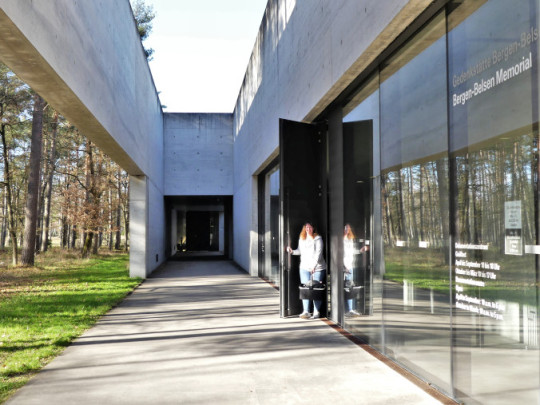
and I restated my purpose. She took my grandmother’s name and cross-checked it against the memorial registry. It’s estimated that more than 50,000 people died of starvation, disease, brutality and medical sadism while interned at Bergen-Belson. When British Allies liberated the camp on April, 15, 1945, they discovered over 60,000 prisoners, most of them sick or dying.
“You are very fortunate. Just before the Liberation, the Nazis destroyed most of their records to hide their crimes. We only have records for only half the prisoners held here, but lucky for you, your grandmother’s name is on the list,” she said with excitement.
And then she presented me with twin volumes…
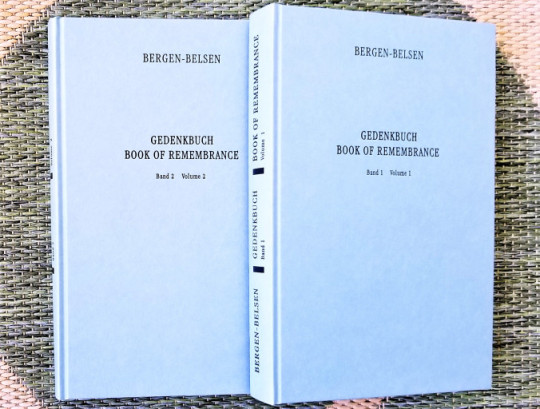
and flagged the most significant page in Volume Two…

which caused my heart to race.
Because of limited time to see the exhibition hall, in search of supporting evidence.

Square window boxes dropped into the floor revealed personal items…
that were unearthed after the British incinerated the camp to control the spread of typhus that permeated the surroundings.

Walls of displays detailed the story of the horrors within…
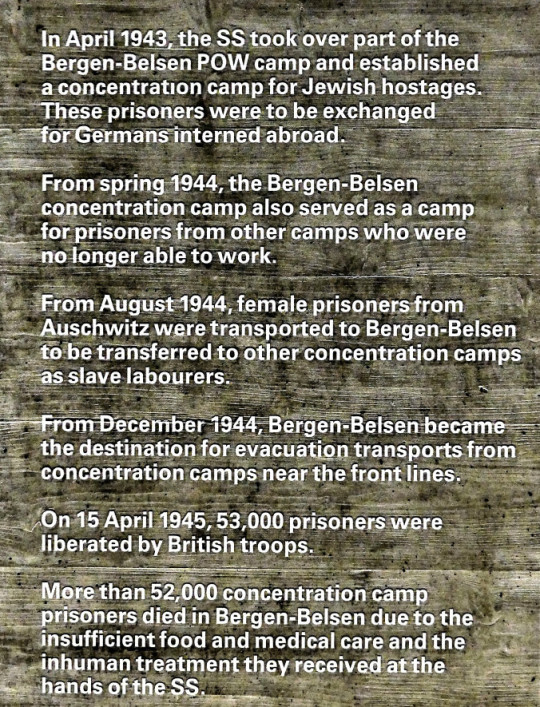
Because of correspondence from Bernd Horstmann, curator of the museum’s Register of Names, I learned that Grandma Rose arrived from Westerbork on January 12, 1944 with 1,024 other Jews,
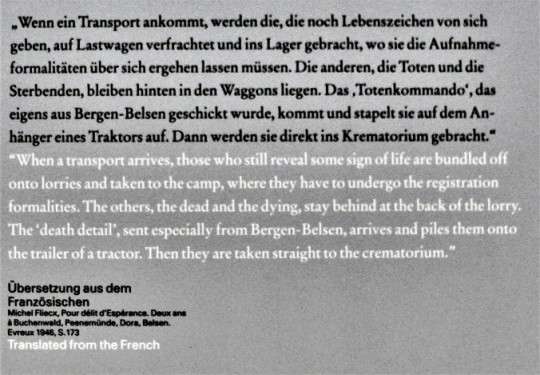
and was detained at the Star Camp, a subsidiary of the Exchange Camp…
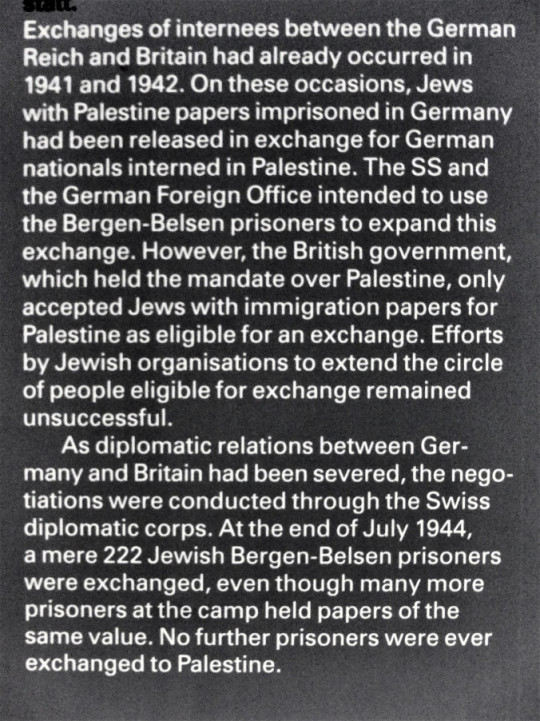

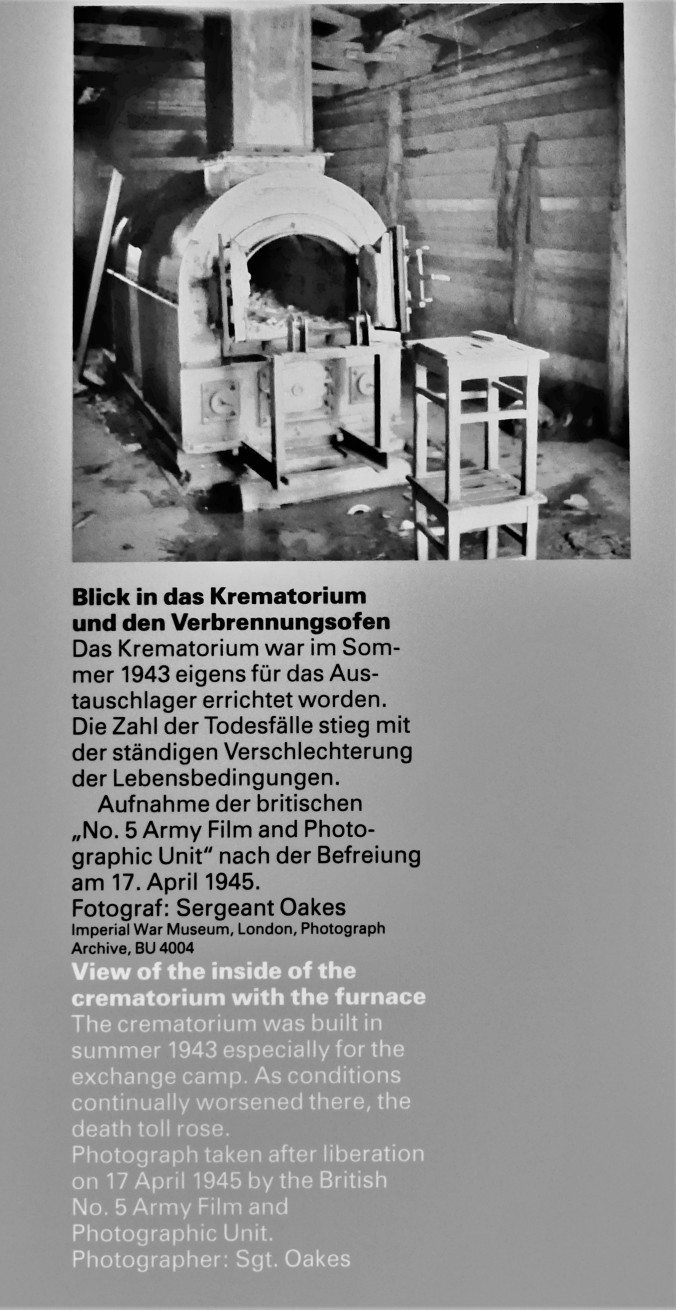
Because Grandma Rose had value to the Nazis as a seamstress, she would most likely be deployed to the SS-owned Weaving Works,
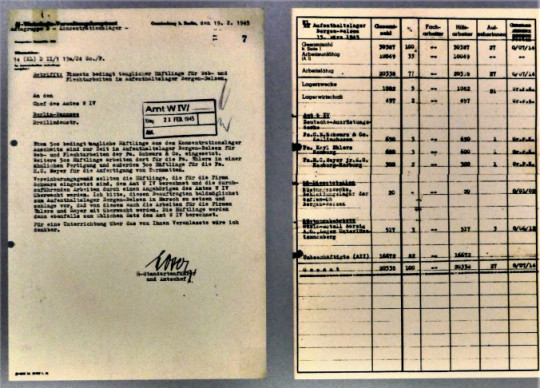
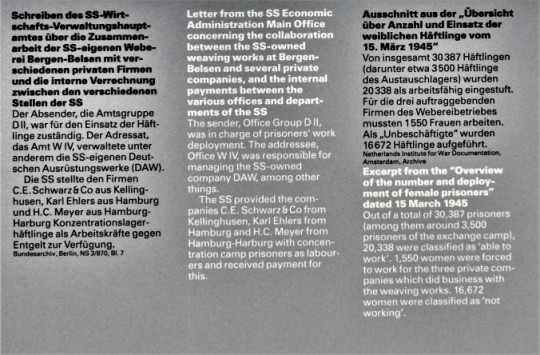
which forced women to produce items from scrap materials,
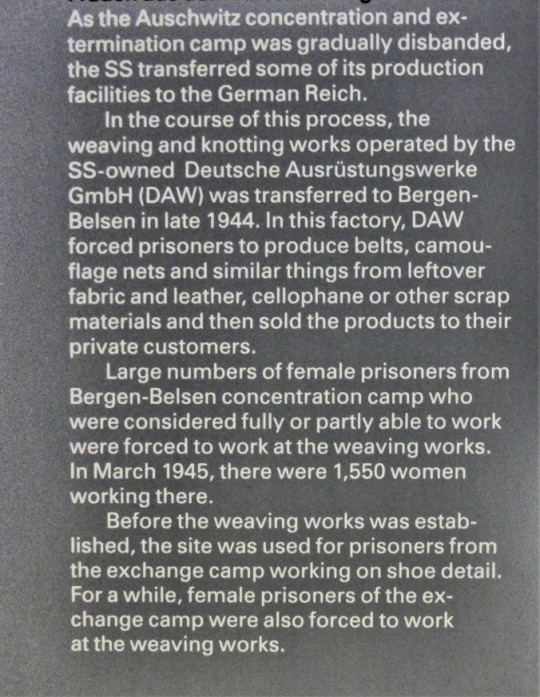
in addition to repairing inmate uniforms.

Camp conditions at the Star Camp were considered better than other sections within Bergen-Belsen, however…

and the indignity was enough to drive to drive the prisoners mad.

Nevertheless, there was a code of conduct inside the huts, regardless of the barbarism on the outside. Having been relegated to Block 20, Grandma Rose was beholden to Jewish Elder, Joseph Weiss.
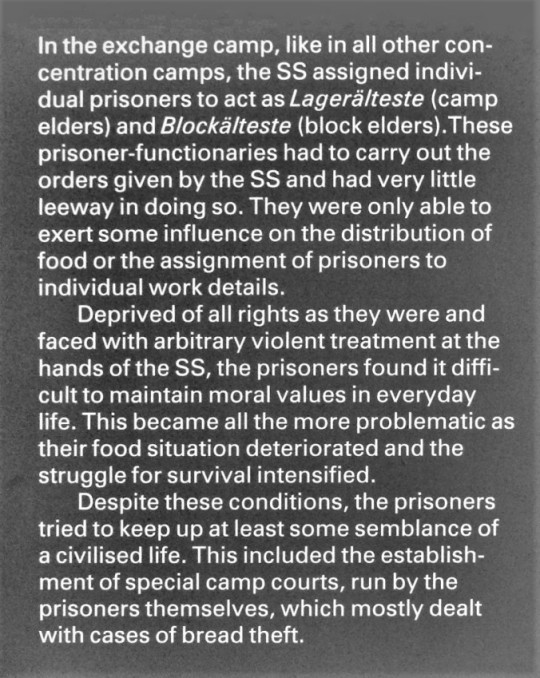
As surrounding concentration camps closed, Bergen-Belsen saw a dramatic increase in inmates. Originally intended as a Soviet POW camp for 20,000 prisoners, the camp population swelled beyond imagination and sustainability.
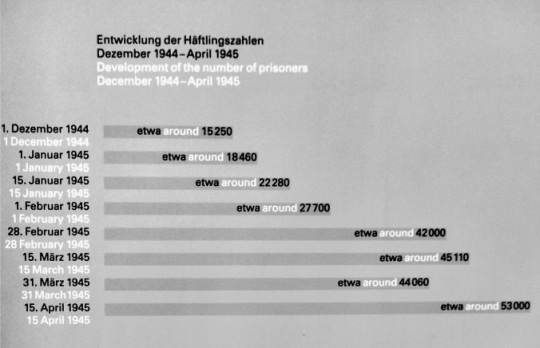
By April, 1945, the Third Reich learned that the Allies had broken German defenses from the west and the south as the Soviets were advancing from the east.
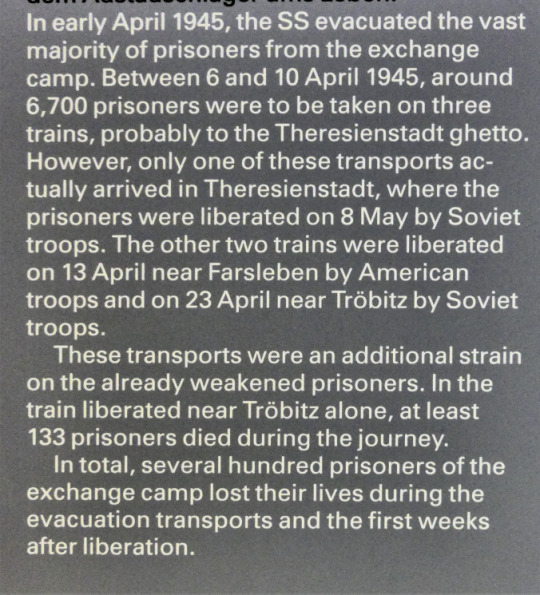
On April 7, 1945, Grandma Rose was among the first to be loaded onto a transport initially bound for Thereisenstadt,
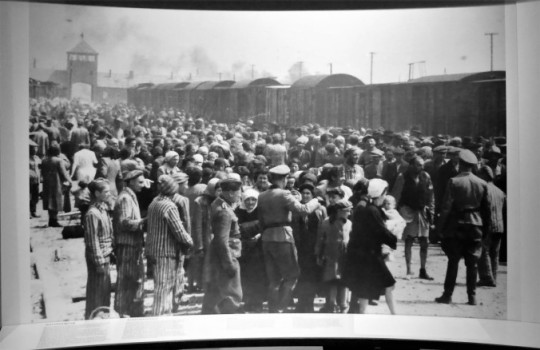
but destined for the gas chambers.

Of course, no one knew where they were going or what to expect, except inhumane conditions, sickness and death.
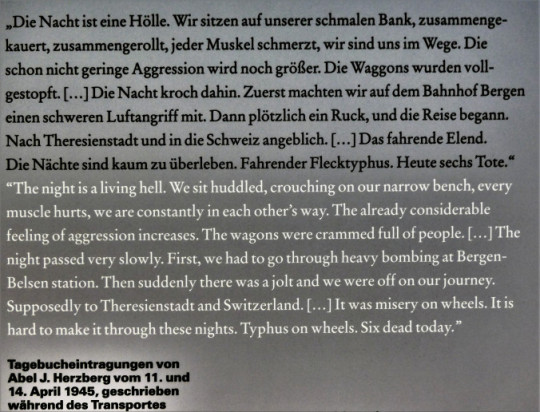
After six days of unimaginable terror on the rails, Grandma Rose’s train was liberated near the German village of Farsleben on April 15, 1945 by American soldiers from the 743rd Tank Battalion of the 30th Infantry Division.
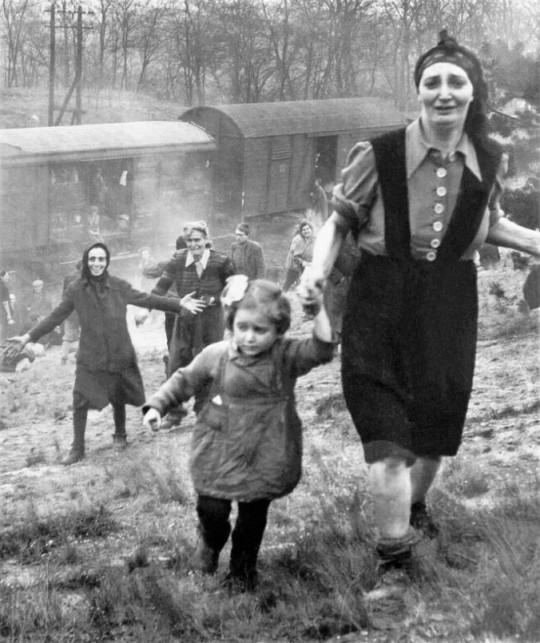
Still-unidentified women, moments after liberation, April 13, 1945. Courtesy of the Gross family
Maj. Frank Towers, who also took part in the liberation, organized the transfer of Grandma Rose and the other 2,500 released prisoners to a nearby town, Hillersleben, where they received medical treatment from Allied troops. She weighed 90 pounds when she admitted to the field hospital.
I had seen enough, but I needed to see more. I just didn’t know if I could process anymore at the time. But there was one last exhibit that I could not ignore inside the Film Tower, no matter how difficult it seemed.
Eventually, the museum was cleared at 5pm. As many as 10 other patrons filed through the exit and into their cars, leaving me with another couple to roam the cemetery grounds on a beautiful Spring afternoon.
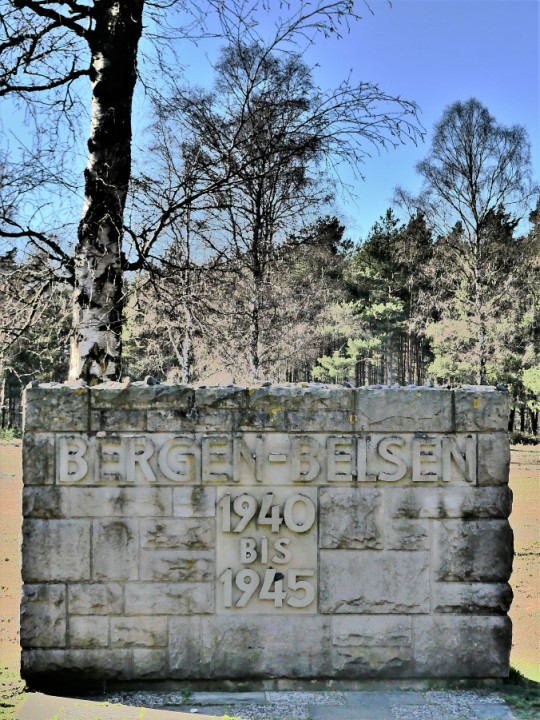
There are no tombstones on the grounds, but there are government memorials…
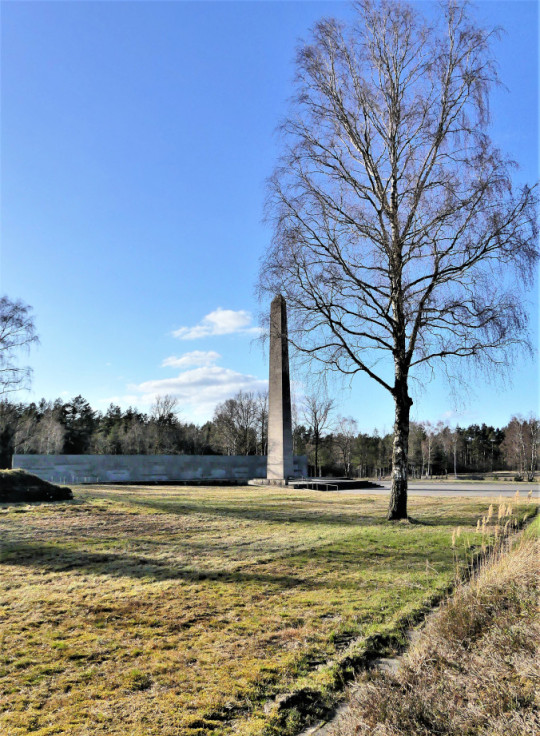
and government tributes…

and personal markers.
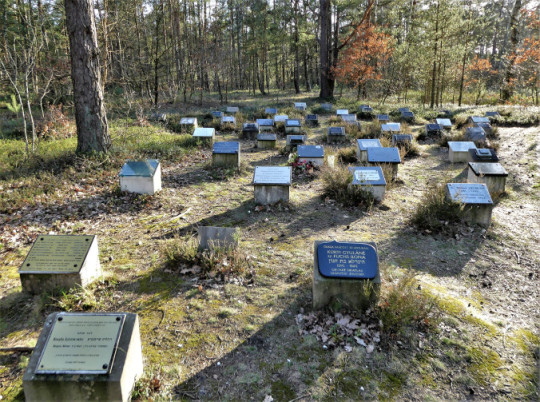
scattered among a cluster of memorial mounds…
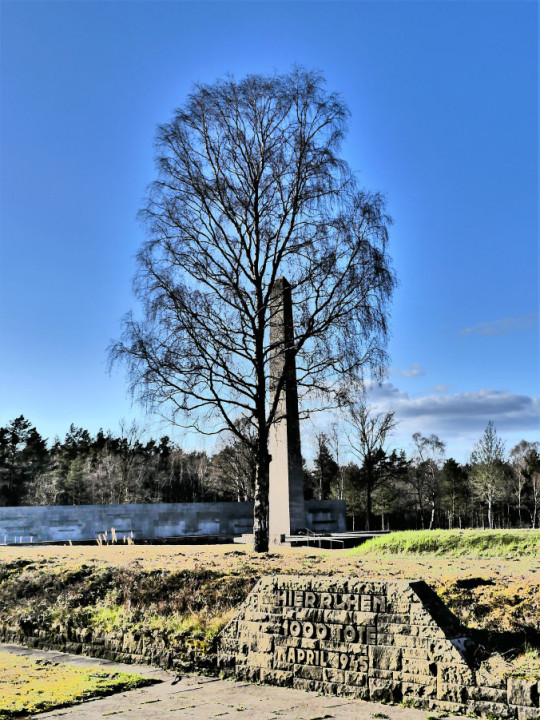
where the unknown remains of tens of thousands share a mass grave beneath the berm.
(please be advised of extremely graphic content)
I found solace inside the House of Silence, an outlying metal and glass edifice in the midst of a birch tree grove…
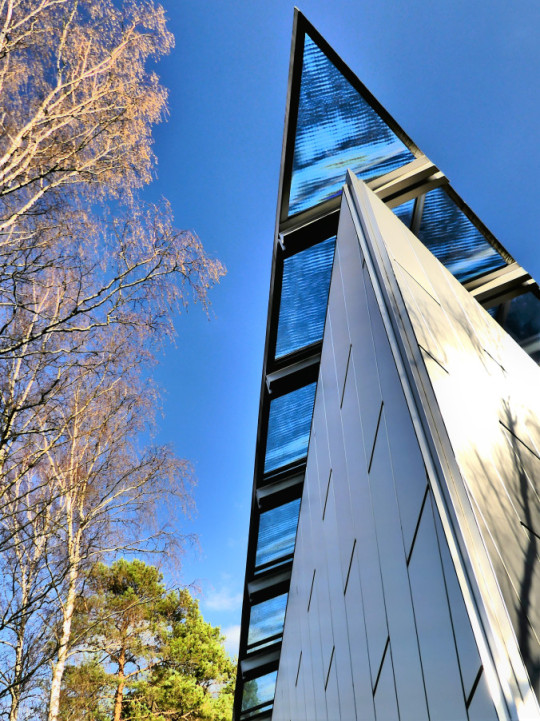
that offers a soaring meditation room…

for personal reflection.

and hundreds of tokens of healing and prayer.
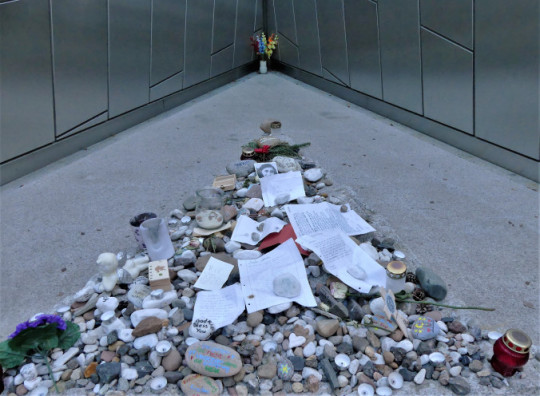
A solemn oath to “never forget,” brings us one-step closer to “never again.”
Searching for Closure, Part 2 I wanted more time in Amsterdam, but time wouldn't allow. I still had Germany to consider, and Bergen-Belsen was my first stop.
0 notes
Link

Top-Speed: 228 KMPH Mileage: 20 Fuel Capacity: 56 0-100: 8.1 Displacement: 1999cc Power@rpm: 199PS@5500RPM Torque@rpm: 320Nm@1750rpm Body Type: Sedan On-Road Price Range Delhi/NCR: Petrol: Rs. 47 L to 54 L Diesel: Rs. 49 L to 56 L On-Road Price Range Mumbai-Bangalore: Petrol: Rs. 51 L to 59 L Diesel: Rs. 52 L to 59 L
Variants


Exterior
Member of the Jaguar’s Saloon Car Family, gets inspired the F-type Sports Car good looks and smooth drive. Optimization is received by lightweight aluminium architecture.
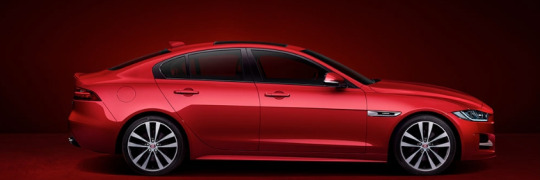

The Grill do all the justice to support that world class leading aluminium car makers.
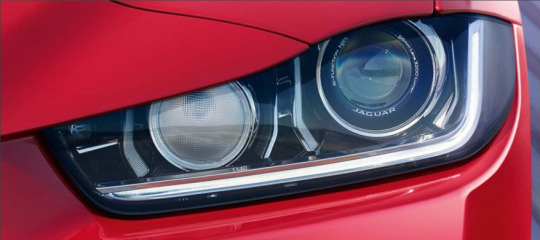
Even at night, XE is instantly recognizable thanks to its Adaptive LED headlights featuring Jaguar’s signature ‘J’ Blade Daytime Running Lights (DRL). Adding to XE commanding on-road presence, adaptive LED headlights produce a color of light that is close to daylight.
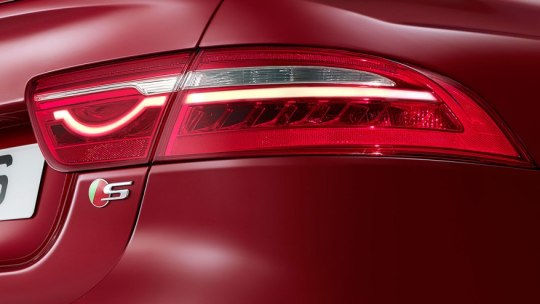
At the rear, full LED tail lamp lets you see the smooth light curve with that bold straight distinctive design.
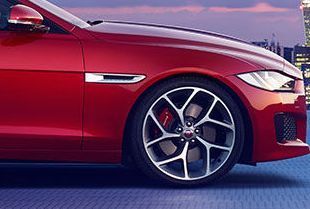
17 inch 5 SPLIT-SPOKE ‘STYLE 7010
Tyre Pressure Monitoring System (TPMS)

XE Inside is clean, organized and simple offering number of interior color combinations, loaded enough features and comforts to make survival easier whether its chilling cold or burning hot, Jaguar is intensely tested for all conditions
Configurable Interior Mood Lighting Premium Carpet Mats JaguarSense

– Overhead Light Console, Four-Zone Climate Control with Air Quality Sensor & Cabin Air Ionization
12.3inch HD Virtual Instrument Display & 10inch Touchscreen Navigation Pro Meridian

Digital Sound System
380 W InControl

Apps Dynamic Volume Control & AM/FM Radio (Diversity) Bluetooth® Telephone Connectivity & Bluetooth® Streaming

Cruise Control & Speed Limiter
JaguarDrive Control

All Surface Progress Control (ASPC)
Hill Launch Assist Speed Proportional Steering
Torque Vectoring by Braking Dynamic Stability Control & Traction Control

Park Assist with 360° Parking Aid
Rear-View Camera
Jaguar Smart Key System

-
Keyless Starting & Keyless Entry
Activity Key
Pro Service & Wi-Fi Hotspot

3 spoke Steering wheel with infotainment controls and paddle shifters

8-Speed Automatic Transmission with Jaguar Sequential Shift & Automatic Stop/Start
Emergency Brake Assist & Hazard Lights under Heavy Braking Perimeter Sensing Alarm & Immobiliser
Rear Lane Keep Assist Driver Condition
Monitor Passive Front Head Restraints








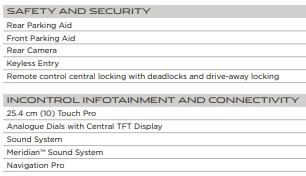

Look For Another Jaguar Model:

Jaguar F-Pace: The Luxury Performance SUV
Jaguar F-Pace: The Luxury Performance SUV
Jaguar F-Pace Exterior, Interior, Gallery,
31 Jan 2019
Jaguar Land Rover 5,000 Jobs Cut?
Do you think the automobile industry is a good option, as there are job cuts too, and that too when you didn't do anything wrong or maybe it's your fault but can you lose 5,000 employees??? Jaguar's Happy Employees Jaguar Land Rover maybe going to do this, 5000 jobs are…
18 Dec 2018
title during its world premiere in London. Leaping into the record books, Jaguar's compact performance SUV achieved an epic 15.3 metre-long jump, complete with a 270-degree corkscrew-like ‘barrel roll’. Behind the wheel was legendary British stunt driver Terry Grant.…" rel="nofollow" data-origin="3374" data-position="2" > Jaguar E-Pace Guinness World Record Gallery
The New Jaguar E-PACE has set an official GUINNESS WORLD RECORDS

title during its world premiere in London. Leaping into the record books, Jaguar's compact performance SUV achieved an epic 15.3 metre-long jump, complete with a 270-degree corkscrew-like ‘barrel roll’. Behind the wheel was legendary British stunt driver Terry Grant.…
30 Jan 2019
0 notes
Text
The Science Behind Reverse Swing

Image Courtesy: http://www.freeimages.co.uk/
In one of our previous blogs, we had discussed the science (more particularly aerodynamics) behind conventional swing bowling. Why conventional? Because there is another much more intriguing facet of swing bowling: The Reverse Swing. In this edition of the Technothlon’s SportScience blog series, we are going to delve into the science behind the art of reverse swing.
History
Though it is not clear who invented it but Pakistani pacer Sarfraz Nawaz is generally credited as one of the very first practitioners of reverse swing in international cricket. His ball swinging skills were later passed on to Imran Khan and even later to the deadly duo of Wasim Akram and Waqar Younis. It is said that during its inception techniques to reverse swing were a well-kept secret within the Pakistani team but now almost every other fast bowler can swing an old ball unconventionally.
What is reverse swing?
Conventionally swinging balls swing in the direction in which the seam is pointed. And it is worthwhile to keep in mind that the movement occurs during its flight. But a ball is said to reverse swing when it swings but not in the direction in which the seam is pointing. So if a conventional in-swinger reverses it will move away from the batsman (out-swing).
Now, before proceeding any further, we need to get a few scientific terms clear.
Boundary layer: When a body is kept in a region of fluid flow a very thin layer of fluid molecules literally sticks to its surface and are stationary but as we move away from the surface the fluid layers gradually pick up speed to match the free stream velocity, the layers of fluid over which this happens is known as Boundary layer.
Turbulent and Laminar flow:

Laminar flow is a fluid flow in which the fluid layers move parallel to each other and do not cross each other. Any flow that is not laminar is termed turbulent.
How does it work?
Flow asymmetry past a ball is the key to producing any sideward movement. For a normally swinging ball, the asymmetry is created by the uneven and slightly protruding seam. The ball is released with the seam inclined at an angle of around 20 degrees to the initial line of flight, now if the velocity of the ball is great enough (but not too much, you’ll see why very soon) the boundary layer on the seam side turns turbulent but that on the opposite (non-seam) side remains laminar. Now the turbulent boundary layer (on the seam side) is rather good at sticking to the surface of the ball than its laminar brother (on the non-seam side). In other words, the laminar boundary layer separates earlier (or more upstream) than the turbulent one. This causes the flow behind the ball to be deflected towards the same side as the non-seam zone is facing. And this, by Newton’s Third Law, generates a sideways deflection force on the ball in the direction of the seam.

Figure 1: Schematic flow over a cricket ball for conventional swing. (Courtesy: An overview of cricket ball swing, Rabindra D. Mehta)
For the ball to swing effectively it is very important that the non-seam side remains as smooth and the seam as prominent as possible. That is why players are often seen to be polishing the ball on one side by rubbing it against their clothes. It has been experimentally observed that maximum side force is obtained at a velocity of 29-30 m/s (104.4 to 108 kmph), seam angle 20 degrees with the ball spinning backward at 11.4 rev/s. As you might have guessed the spin helps stabilize the seam (a wobbly seam hampers the effect of any kind of swing force). But if the velocity is increased further the sideward force decreases. The reason being that at higher velocities the boundary layer on the non-seam side transitions into being turbulent and hence the flow asymmetry decreases. At a certain velocity, even zero force is obtained! At even higher velocities we enter the regime of reverse swing.
At these velocities the boundary layers on both the seam and non-seam sides are turbulent but on one side it still has to encounter the seam. This time the seam plays a seemingly curious role, it thickens and weakens the already turbulent layer making it more susceptible to separation than the thinner turbulent layer on the non-seam side. Loosely speaking, the extent of the turbulent boundary layer depends on the height of surface roughness and its quite an intuitive that a thicker layer would separate more easily. Flow asymmetry is created once again with the boundary layer on the seam side separating earlier (or more upstream), deflecting the flow towards the seam side and producing a sliding force away from the direction in which the seam is pointing. Fascinating still is the fact that a ball can reverse swing with the exact same grip and bowling action as a conventional swinger. This makes it even more difficult for a batsman to predict the trajectory of a ball.

Figure 2: Schematic flow over a cricket ball for reverse swing. (Courtesy: An overview of cricket ball swing, Rabindra D. Mehta)
So is there any way to reverse swing a ball other than just increasing the bowling speed? Yes! Absolutely, all that we have to do is make the boundary layer on the non-seam side turbulent, and it turns out that surface roughness on the non-seam side plays a very important role in deciding the approximate lower limit of velocity for which the ball will turn.
It has been experimentally observed that a new ball will show significant reverse swing for velocities in excess of 130 Kmph but this figure decreases dramatically to around 108 Kmph for old, beaten up balls. Why? Because old balls are rough on their surfaces.
Ball Tampering and Swing
Bowlers have always paid a lot of attention to the physical (including surface) qualities of a ball and their effects on its behavior. But, unfortunately, there have been a number of recorded incidents in the history of the game where players have gone beyond the rules to modify and/or damage the ball so as to make it behave in the desired way.
For a ball swinging normally a prominent seam and a smooth non-seam surface facilitates the movement. The center of ball tampering controversy in the 1970s was players using Vaseline and sunscreen lotion to polish the surface of the ball when the only substances legally accepted for polishing are sweat and saliva. Other than that players are often spotted trying to raise the seam to make it more prominent and aid in the production of the quantum of movement. The reverse swing, on the other hand, has been notoriously associated with ball tampering allegations right from its inception. It was even thought of as an outcome attainable only through illegal ball tampering techniques. There are well-documented cases, dating back to the 1980s, of bowlers trying to make the ball rough by nicking or gouging its surface, rubbing it on the ground etc. They were essentially trying to make the ball rough to help produce swing at lower velocities.
But the thing to be really emphasized here is that reverse swing can be obtained without resorting to illegal handling of the ball. At the outset, the opening bowler should pick a less rough side of the new ball and continue to polish only that side during the course of play, when the other side has roughened enough reverse swing is obtained just by flipping the ball over so that the smooth surface now remains on the side of the seam.
It has been more than three decades since reverse swing was first observed in international cricket. And it has certainly come a long way from being a mysterious, clandestine and almost illegal affair to being called an example of aerodynamic beauty. Credits, once again, go to science.
Abhirikshma Nandi, Team Technothlon ‘17
4 notes
·
View notes
Text
Electric Bike, a New Revolution
Transportation has always been an important part of the life of human being. Every human being has to travel to different places for different purposes. During the stone-age, man used to travel by foot. As man gained some knowledge by applying his brain, he attached a cart to be pulled by tamed animals and used to travel with their whole family. bicycle shop klang
The most common type of motor used in electric bikes is a hub motor. These can be used on either the front or rear wheels and do not require chains, belts or gears. Essentially the motor is the hub of the wheel and contains two concentric rings of opposing electromagnets. When power from the battery is applied to the motor the opposing magnetic force causes the wheel to spin. This type of motor is almost completely silent and requires no maintenance. The higher the wattage of the motor, the more power it provides. One caveat however. There is no standard for measuring wattage. Many marketers of these products use their peak output numbers as opposed to the operating output numbers. A motor rated at 1000 watts peak may be a 500-watt motor in its standard operating output. Be sure to find out which. Only standard operating output is truly comparable.
Electric bikes are basic in concept. They use the power of an electric motor to aid the cyclist in moving from place to place. Whether over long distances or on hilly terrain, the electric bike can make a big difference in the use of a bicycle for travel, allowing the cyclist to arrive at his destination fresh and exhilarated. They work especially well in urban environments with their congested automobile traffic and limited parking spaces. basikal motor elektrik
Man is never satisfied with what he possesses. He always wants to have more and more. He keeps on applying brain to invent something new to get more facility and make life smooth, so he went on making changes in the bicycle up to an extend that to-day the bicycle is made to run with electric as a fuel, which has been given the name of ELECTRIC BIKE. This new mode of transport has now become popular whole over the world. This is basically a bicycle which is a bit heavier than a common bicycle which moves forward by acceleration.
The best part is this bike does not require petrol or any other fuel to run just as the other motorbikes do. It runs on a chargeable battery, so if the battery runs down, you can paddle the bike to reach your destination. The other advantage is no RTA registration or license is required to own and ride this bike, so even your 10-12 year child can also ride this bike if provided proper training. In fact this is the vehicle made for teenagers. The only drawback is you can't speed-ride this bike. The maximum speed you can ride per hour is 30 kms. But the manufacturers and the dealers advise to ride at the maximum speed of 20 kmph for better result.
Visit here - electric scooter malaysia
0 notes
Text
12125/26 Mumbai Pune Pragati express is one of the regular daytime intercity commuter trains serving the bustling Mumbai-Pune route. However, it is a train in which I had never travelled; until yesterday (from Pune to Mumbai). 12126 was parked on its customary platform 5; behind chocolate brown KYN WCAM2-6P 21864.
My coach C2 was of a 2011 make (C1 was of a 2014 make), and thus had plug points in all bays 🙂 . My seat 36 was right in the middle of the coach, and was a non-trackside window facing towards Pune 😦 – across us was a table; on the other side of which were Mumbai-facing seats. Unfortunately, the glass was frosted; due to which the view was a bit blurred 😦 . The seat cushions were of a pleasant maroon brown hue. 71408 Daund-Pune DEMU arrived on PF4 at 07 47, 17 mins late. We departed right on the dot at 07 50. To my pleasant surprise, there were regular announcements in the coach, in English, Hindi and Marathi! 🙂 For example, “Welcome to Pragati express”, “We wish you a very happy and comfortable journey”, “Next station – Lonavala” etc. This is something I had never heard of, i.e. in other than the Rajdhani/Shatabdi/Duronto class of trains! :O
After slowly crossing over the points and picking up speed just before the Sangam bridge, we had a blasting run till Kasarwadi; before slowing down and overtaking a rake full of parcel vans hauled by a WDG4 (SHF) at Chinchwad. Then it was again a fast run till Dehu Road, after which my ticket was checked. We reverted to a sedate pace once more before blasting through the ghost station Begdewadi, where a shelter was being constructed. I had 2 bread cutlets (stuffed with beetroot) for breakfast. Then we overtook 11024 KOP-CSMT Sahyadri express led by a KYN WCAM2P at Talegaon, at 08 20; after a slight drop in speed. We started ripping again after crossing the station limits. It was very cloudy now. Also, I noticed the TTE having a heated argument with a passenger at the rear. Meanwhile, we crossed Kamshet at MPS at 08 28; having covered the last 36 km (from Kasarwadi) in 25 mins at an average speed of 86.4 kmph – very impressive, given the slow downs! 🙂
The aforementioned passenger was asked to get down at Lonavala and travel in one of the unreserved coaches thereafter! :O In the meantime, we were ripping through greenery – fields watered by rain, many stagnant ponds, and mountains covered completely in green! 😉 We also raced vehicles on the highway in the distant left, before a slow down from Lonavala home signal onwards; as we crossed over from Pune to Mumbai division. Overtook a stationary ACC Cement freight behind KZJ WDG4D 70365 and WDG4 12754 in the yard. Then we picked up the pace to enter the station at a decent pace, arriving at 08 42; 3 mins late. We had covered the 64 km from Pune in 52 mins at 73.85 kmph 🙂 . Some people got down and many people got in here. We departed after a halt of 2 mins. There was a PSR of 25 kmph; after which we took the UP line to begin our descent down the Bhor Ghats. The view as we neared Khandala was magical, thanks to the monsoon! 🙂
Khandala station was green, rain-drenched and scenic! 🙂
The view grew even more breathtaking as we neared Monkey Hill, Khandala! 🙂
There was a creepy little crab crawling on the rocks as we stopped due to a red signal! :O
We were diverted to the Midline after this stop! :O
In the 2nd pic, you can see the steep catch-siding; to which trains are usually diverted in the rare event that a runaway occurs. There was a PSR of 25 kmph at Monkey Hill, followed by another PSR of 30 kmph after the signal. There was yet another PSR of 30 kmph at the Thakurwadi brake-testing halt. The vistas continued to be scenic as ever, as we descended further down the ghats! 🙂
Meanwhile, I noticed that there was a fan (apart from the exhaust fan) in one of the toilets! :O We stopped at Karjat home signal for a minute, before overtaking a stationary BCNA rake headed by Pune WDG4D 70371 in the yard. We also crossed a local to Khopoli before entering the station at 09 41, 22 mins late. We had taken 57 mins for the 28 km from Lonavala, mainly because of the MPS of 55 kmph while descending the Bhor Ghats; as well as the brake-testing halts at Khandala and Thakurwadi. Besides, there was also the halt due to a red signal at Monkey Hill; after which we lost further time due to the many PSRs as well as the diversion to the Midline; not to mention the halt for clearance before Karjat! 😛 Given all this, the allotted time of 39 mins (at 43.08 kmph) for the distance between Lonavala and Karjat seems too tight! We departed Karjat after a stop of just 1 minute. The loopline speed (as we took the line to Panvel) was only 15 kmph. We slowly veered away to the left; away from the main line to KYN.
Then there was a very long tunnel, inside which there was a lot of water seeping inside due to the monsoon.
Towards the end of the tunnel, we picked up speed and started blasting through rock cuttings, a lot of greenery with many trees; and a dam built by the Navi Mumbai Municipal Corporation in the distant right. I loved the clickety clack track music! 🙂
Then we had an unscheduled halt at Chowk for 10 mins, as 11025 BSL-Pune express came slowly behind BSL WAP4 22361; and made its scheduled stop on the loopline. We departed at the same time 11025 arrived, and started blasting away soon; since we were on the mainline. There was a medium-length tunnel, followed by many Hiranandani style high rise buildings (some of them under construction) in the distant left. There were also more rock cuttings before we blasted through Mohope, crossing a tanker train with a WAG9 in the process. Then we slowed down due to a TSR of 50 kmph. The effect of the monsoon was there for all to see; with greenery everywhere, stagnant ponds and flooded fields. We ripped across the Mumbai-Pune expressway in style and blasted through Chikhale at 10 18. However, like all good things; our fast run soon came to an end! 😦 We started crawling, as the lines from Roha joined below us.
Then we had a stop of 4 mins for clearance to Panvel, as 12618 NZM-ERS Mangala Lakshadweep express crossed below us behind a buzzing GOC WDP4D 40405. As we then limped towards Panvel, I saw the Reliance Industries Plants on the left. We also crossed a stationary freight hauled by UBL WDG4 12325 in the right, before pulling into Panvel at 10 33; half an hour late. We had covered the 28 km from Karjat in 51 mins at 32.94 kmph! 😛 Thanks largely to the 10 minute halt for the crossing with 11025 (ah! a superfast Mumbai-Pune intercity has to suffer the flip-flops of a single line section! 😦 ) and the 4-minute stop for clearance before Panvel. Anyway, it was good that we were received on PF5 at Panvel; as I got down here, and could cross over to the local train platforms without using the FOB! 😀 I boarded the 10 45 slow local to Andheri. As we exited Panvel, I saw KJM WDP4D 40278 and BRC WAP5 30092 on sidings in the right – with which KR trains (having an electric-diesel change and vice-versa at Panvel) could these trains have come with? 😉
At Kurla, I took another slow local to Vikhroli; whereon I took a share-auto and reached home by 12 10. Thus ended an eventful first ever journey by 12126 Pragati express – a mixed bag overall; the positives being a newer C2 coach with facilities like plug points in all bays as well as fans in toilets, the announcements inside the coach, a fast run from Pune to Lonavala, the scenery of the Karjat-Panvel route; and of course the famous rain-drenched Bhor Ghats! 🙂 On the flip side, it was a disappointing run overall from Lonavala onwards; thanks to the numerous PSRs and the diversion from the UP line to the Midline in the Bhor Ghats, as well as the long crossing halt in the single-line Karjat-Panvel section. It is high time CR thinks of doubling it – we can’t afford a daytime intercity superfast (that too covering a distance of less than 200 km) to traverse a 28 km long single-line section! :O Finally, thank you for patiently reading this long blog post! 😛
Technical Terms
DEMU – Diesel Electric Multiple Unit (or just diesel local train 😛 )
SHF – Short Hood Forward
PSR – Permanent Speed Restriction
TSR – Temporary Speed Restriction
MPS – Maximum Permissible Speed
FOB – Foot-overbridge
Station Codes
KYN – Kalyan
KOP – Kolhapur
CSMT – Mumbai CST
KZJ – Kazipet
BSL – Bhusaval
NZM – Hazrat Nizamuddin
ERS – Ernakulam Junction
GOC – Golden Rock (Ponmalai)
UBL – Hubli
KJM – Krishnarajapuram
BRC – Vadodara
My first journey by Pragati express 12125/26 Mumbai Pune Pragati express is one of the regular daytime intercity commuter trains serving the bustling Mumbai-Pune route.
0 notes
Text
Best Hoverboards In India You Can Purchase Right Away
Pondering where to purchase best hoverboards in India? All things considered, in the beneath story you can locate the best hoverboards and furthermore purchase rechargeable, self-adjusting, electric fueled hoverboards on Amazon, Flipkart and Snapdeal.
Hoverboards are little gadgets which resemble a skateboard and have an engine and battery introduced in them and keep running on tires, these are self-adjusted and they have sensors to detect the development. The battery controls up the engine and it moves toward your weight. On the off chance that you slender somewhat forward the body weight would be more on the front side and this will initiate the hoverboard to advance, this is the way the hoverboard moves every which way.
These electric self-adjusting hoverboards are a ton in incline currently, individuals simply get on it and move any place they wish to go. These are not for a long separation but rather adequate for short separations. These self-adjusting hoverboards can be your day by day closest companion which will enable you to drive to adjacent spots.
Rundown of Best Hoverboards You Can Shop Online:
Underneath you can discover the rundown of best hoverboards which you can shop online with no issue so as to claim outstanding amongst other hoverboards in India. Lets investigate:
1. SWAGTRON T6 Off-Road Hoverboard
The first in the rundown of best hoverboards accessible in the market is this rough terrain hoverboard by swagtron. This organization makes hoverboards which are UL2272 Certified. This affirmation implies that your hoverboard would not burst into flames. This is the best wellbeing highlight you should search for in each hoverboard.
It has a 10-inch tire and is best reasonable for various landscapes.
The T6 rough terrain hoverboard has a 20-kilometers extend, and the capacity to achieve controlled velocities of up to 20 KMPH and can deal with more than 180 Kgs, settling on it the best decision for riders of every kind imaginable!
2. SWAGTRON T5
This technician gadget is another by swagtron who wish to drive just in urban areas and on streets. The UL2272 ensured item is self-adjusted and has licensed battery insurance. It has a 30-degree climbing limit as leverage with a maximum speed of 11 kmph. You additionally have a learning mode in this to diminish the speed, making it simple for you to figure out how to ride this machine.
3. SWAGTRON T3
An astonishing gadget for all the youthful workers with all the propelled highlights, this gadget is pressed with LED turn signals, 5 level battery markers, 3 riding modes, elastic tires with aluminum wheels, non-slip foot cushions, and an implicit conveying tie. To include fun in life you additionally have Bluetooth speakers on this machine which can be effectively associated with your cell phone. You get applications for this effectively on Android and iOS.
4. SWAGTRON T1
This is the coolest electric battery utilized gadget to drive. The SWAGTRON T1 highlights a smoother and additionally settling rigging and engine framework. This is simply so one of a kind and great that you get across the board a hoverboard, self-adjusting bike, float board and without hands savvy board. The splendid drove lights on this one would make your experience more eager and streets would appear to be more wonderful.
5. Stego Self Balancing Scooter/Hoverboard
Stego hoverboard has looks which could draw in any youthful person, it has a spray painting plan on it with some extremely astonishing hues. Stego has utilized a Samsung battery in it for more security as Samsung is an exceptionally understood brand and its batteries are certainly superior to a ton numerous different batteries. It has a 10inch tire and a decent ground freedom.
0 notes
Text
Best Hoverboards In India You Can Purchase Right Away
Pondering where to purchase best hoverboards in India? All things considered, in the beneath story you can locate the best hoverboards and furthermore purchase rechargeable, self-adjusting, electric fueled hoverboards on Amazon, Flipkart and Snapdeal.
Hoverboards are little gadgets which resemble a skateboard and have an engine and battery introduced in them and keep running on tires, these are self-adjusted and they have sensors to detect the development. The battery controls up the engine and it moves toward your weight. On the off chance that you slender somewhat forward the body weight would be more on the front side and this will initiate the hoverboard to advance, this is the way the hoverboard moves every which way.
These electric self-adjusting hoverboards are a ton in incline currently, individuals simply get on it and move any place they wish to go. These are not for a long separation but rather adequate for short separations. These self-adjusting hoverboards can be your day by day closest companion which will enable you to drive to adjacent spots.
Rundown of Best Hoverboards You Can Shop Online:
Underneath you can discover the rundown of best hoverboards which you can shop online with no issue so as to claim outstanding amongst other hoverboards in India. Lets investigate:
1. SWAGTRON T6 Off-Road Hoverboard
The first in the rundown of best hoverboards accessible in the market is this rough terrain hoverboard by swagtron. This organization makes hoverboards which are UL2272 Certified. This affirmation implies that your hoverboard would not burst into flames. This is the best wellbeing highlight you should search for in each hoverboard.
It has a 10-inch tire and is best reasonable for various landscapes.
The T6 rough terrain hoverboard has a 20-kilometers extend, and the capacity to achieve controlled velocities of up to 20 KMPH and can deal with more than 180 Kgs, settling on it the best decision for riders of every kind imaginable!
2. SWAGTRON T5
This technician gadget is another by swagtron who wish to drive just in urban areas and on streets. The UL2272 ensured item is self-adjusted and has licensed battery insurance. It has a 30-degree climbing limit as leverage with a maximum speed of 11 kmph. You additionally have a learning mode in this to diminish the speed, making it simple for you to figure out how to ride this machine.
3. SWAGTRON T3
An astonishing gadget for all the youthful workers with all the propelled highlights, this gadget is pressed with LED turn signals, 5 level battery markers, 3 riding modes, elastic tires with aluminum wheels, non-slip foot cushions, and an implicit conveying tie. To include fun in life you additionally have Bluetooth speakers on this machine which can be effectively associated with your cell phone. You get applications for this effectively on Android and iOS.
4. SWAGTRON T1
This is the coolest electric battery utilized gadget to drive. The SWAGTRON T1 highlights a smoother and additionally settling rigging and engine framework. This is simply so one of a kind and great that you get across the board a hoverboard, self-adjusting bike, float board and without hands savvy board. The splendid drove lights on this one would make your experience more eager and streets would appear to be more wonderful.
5. Stego Self Balancing Scooter/Hoverboard
Stego hoverboard has looks which could draw in any youthful person, it has a spray painting plan on it with some extremely astonishing hues. Stego has utilized a Samsung battery in it for more security as Samsung is an exceptionally understood brand and its batteries are certainly superior to a ton numerous different batteries. It has a 10inch tire and a decent ground freedom.
0 notes
Text
Best Hoverboards In India You Can Purchase Right Away
Pondering where to purchase best hoverboards in India? All things considered, in the beneath story you can locate the best hoverboards and furthermore purchase rechargeable, self-adjusting, electric fueled hoverboards on Amazon, Flipkart and Snapdeal.
Hoverboards are little gadgets which resemble a skateboard and have an engine and battery introduced in them and keep running on tires, these are self-adjusted and they have sensors to detect the development. The battery controls up the engine and it moves toward your weight. On the off chance that you slender somewhat forward the body weight would be more on the front side and this will initiate the hoverboard to advance, this is the way the hoverboard moves every which way.
These electric self-adjusting hoverboards are a ton in incline currently, individuals simply get on it and move any place they wish to go. These are not for a long separation but rather adequate for short separations. These self-adjusting hoverboards can be your day by day closest companion which will enable you to drive to adjacent spots.
Rundown of Best Hoverboards You Can Shop Online:
Underneath you can discover the rundown of best hoverboards which you can shop online with no issue so as to claim outstanding amongst other hoverboards in India. Lets investigate:
1. SWAGTRON T6 Off-Road Hoverboard
The first in the rundown of best hoverboards accessible in the market is this rough terrain hoverboard by swagtron. This organization makes hoverboards which are UL2272 Certified. This affirmation implies that your hoverboard would not burst into flames. This is the best wellbeing highlight you should search for in each hoverboard.
It has a 10-inch tire and is best reasonable for various landscapes.
The T6 rough terrain hoverboard has a 20-kilometers extend, and the capacity to achieve controlled velocities of up to 20 KMPH and can deal with more than 180 Kgs, settling on it the best decision for riders of every kind imaginable!
2. SWAGTRON T5
This technician gadget is another by swagtron who wish to drive just in urban areas and on streets. The UL2272 ensured item is self-adjusted and has licensed battery insurance. It has a 30-degree climbing limit as leverage with a maximum speed of 11 kmph. You additionally have a learning mode in this to diminish the speed, making it simple for you to figure out how to ride this machine.
3. SWAGTRON T3
An astonishing gadget for all the youthful workers with all the propelled highlights, this gadget is pressed with LED turn signals, 5 level battery markers, 3 riding modes, elastic tires with aluminum wheels, non-slip foot cushions, and an implicit conveying tie. To include fun in life you additionally have Bluetooth speakers on this machine which can be effectively associated with your cell phone. You get applications for this effectively on Android and iOS.
4. SWAGTRON T1
This is the coolest electric battery utilized gadget to drive. The SWAGTRON T1 highlights a smoother and additionally settling rigging and engine framework. This is simply so one of a kind and great that you get across the board a hoverboard, self-adjusting bike, float board and without hands savvy board. The splendid drove lights on this one would make your experience more eager and streets would appear to be more wonderful.
5. Stego Self Balancing Scooter/Hoverboard
Stego hoverboard has looks which could draw in any youthful person, it has a spray painting plan on it with some extremely astonishing hues. Stego has utilized a Samsung battery in it for more security as Samsung is an exceptionally understood brand and its batteries are certainly superior to a ton numerous different batteries. It has a 10inch tire and a decent ground freedom.
0 notes
Text
300+ TOP HIGHWAY Engineering Objective Type Questions and Answers
HIGHWAY Engineering Multiple Choice Questions :-
1. Nagpur road plan formula were prepared by assuming a) rectangular or block road pattern b) radial or star and block road pattern c) radial or star and circular road pattern d) radial or star and grid road pattern Ans: d 2. Select the correct statement. a) Nagpur road plan formula take into account the towns with very large population. b) Nagpur road plan has a target road length of 32 km per 100 square km. c) Second 20-year plan has provided 1600 km of expressways out of the proposed National highway. d) Second 20-year plan allowed deduction of length of railway track in the area while calculating the length of roads. Ans: c 3. The sequence of four stages of survey in a highway alignment is a) reconnaissance, map study, preliminary survey and detailed survey b) map study, preliminary survey, reconnaissance and detailed survey c) map study, reconnaissance, preliminary survey and detailed survey d) preliminary survey, map study, reconnaissance and detailed survey Ans: c 4. The shape of the camber, best suited for cement concrete pavements, is a) straight line b) parabolic c) elliptical d) combination of straight and parabolic Ans: a 5. For water bound macadam roads in localities of heavy rainfall, the recommended value of camber is a) 1 in 30 b) 1 in 36 c) 1 in 48 d) 1 in 60 Ans: b 6. The stopping sight distance depends upon a) total reaction time of driver b) speed of vehicle c) efficiency of brakes d) all of the above Ans: d 7. When the path travelled along the road surface is more than the circumferential movement of the wheels due to rotation, then it results in a) slipping b) skidding c) turning d) revolving Ans: b 8. Coefficient of friction is less when the pavement surface is a) rough b) dry c) smooth and dry d) smooth and wet Ans: d 9. The shoulder provided along the road edge should be a) rougher than the traffic lanes b) smoother than the traffic lanes c) of same colour as that of the pavement d) of very low load bearing capacity Ans: a 10. Camber in the road is provided for a) effective drainage b) counteracting the centrifugal force c) having proper sight distance d) none of the above Ans: a 11. Compared to a level surface, on a descending gradient the stopping sight distance is a) less b) more c) same d) dependent on the speed Ans: b 12. On a single lane road with two way traffic, the minimum stopping sight distance is equal to a) stopping distance b) two times the stopping distance c) half the stopping distance d) three times the stopping distance Ans: b 13. The desirable length of overtaking zone as per IRC recommendation is equal to a) overtaking sight distance b) two times the overtaking sight distance c) three times the overtaking sight distance d) five times the overtaking sight distance Ans: d 14. Stopping sight distance is always a) less than overtaking sight distance b) equal to overtaking sight distance c) more than overtaking sight distance d) none of the above Ans: a 15. Reaction time of a driver a) increases with increase in speed b) decreases with increase in speed c) is same for all speeds d) none of the above Ans: b 16. If the stopping distance is 60 meters, then the minimum stopping sight distance for two lane, two way traffic is a) 30m b) 60m c) 120m d) 180m Ans: b 17. The effect of grade on safe overtaking sight distance is a) to increase it on descending grades and to decrease it on ascending grades b) to decrease it on descending grades and to increase it on ascending grades c) to increase it on both descending and ascending grades d) to decrease it on both descending and ascending grades Ans: c 18. The ruling design speed on a National Highway in plain terrain as per IRC recommendations is a) 60 kmph b) 80 kmph c) 100 kmph d) 120 kmph Ans: c 19. The terrain may be classified as rolling terrain if the cross slope of land is a) upto 10% b) between 10% and 25% c) between 25% and 60% d) more than 60% Ans: b 20. If b is the wheel track of a vehicle and h is the height of centre of gravity above road surface, then to avoid overturning and lateral skidding on a horizontal curve, the centrifugal ratio should always be a) less than b/2h and greater than co-efficient of lateral friction b) less than b/2h and also less than co-efficient of lateral friction c) greater than b/2h and less than co-efficient of lateral friction d) greater than b/2h and also greater than coefficient of lateral friction Ans: b 21. As per IRC recommendations, the maximum limit of super elevation for mixed traffic in plain terrain is a) 1 in 15 b) 1 in 12.5 c) 1 in 10 d) equal to camber Ans: a 22. For the design of super elevation for mixed traffic conditions, the speed is reduced by a) 15% b) 20% c) 25% d) 75% Ans: c 23. On a horizontal curve if the pavement is kept horizontal across the alignment, then the pressure on the outer wheels will be a) more than the pressure on inner wheels b) less than the pressure on inner wheels c) equal to the pressure on inner wheels d) zero Ans: a 25. For a constant value of coefficient of lateral friction, the value of required super-elevation increases with a) increase in both speed and radius of curve b) decrease in both speed and radius of curve c) increase in speed and with decrease in radius of curve d) decrease in speed and with increase in radius of curve Ans: d 26. To calculate the minimum value of ruling radius of horizontal curves in plains, the design speed is given by a) 8 kmph b) 12kmph c) 16kmph d) 20 kmph Ans: c 27. The absolute minimum radius of curve for safe operation for a speed of 110 kmph is a) 110 m b) 220 m c) 440 m d) 577 m Ans: c 28. The attainment of super elevation by rotation of pavement about the inner edge of the pavement a) is preferable in steep terrain b) results in balancing the earthwork c) avoids the drainage problem in flat terrain d) does not change the vertical alignment of road Ans: c 29. Select the correct statement. a) Psychological extra widening depends on the number of traffic lanes. b) Mechanical extra widening depends on the speed of vehicle. c) Psychological extra widening depends on the length of wheel base. d) Psychological extra widening depends on the speed of vehicle. Ans: d 30. In case of hill roads, the extra widening is generally provided a) equally on inner and outer sides of the curve b) fully on the inner side of the curve c) fully on the outer side of the curve d) one-fourth on inner side and three-fourth on outer side of the curve Ans: b 31. The transition curve used in the horizontal alignment of highways as per IRC recommendations is a) spiral b) lemniscate c) cubic parabola d) any of the above Ans: a 32. For design, that length of transition curve should be taken which is a) based on allowable rate of change of centrifugal acceleration b) based on rate of change of super elevation c) higher of (a) and (b) d) smaller of (a) and (b) Ans: c 33. The maximum design gradient for vertical profile of a road is a) ruling gradient b) limiting gradient c) exceptional gradient d) minimum gradient Ans: a 34. The percentage compensation in gradient for ruling gradient of 4% and horizontal curve of radius 760 m is a) 0.1 % b) 1 % c) 10% d) no compensation Ans: d 35. If ruling gradient is I in 20 and there is also a horizontal curve of radius 76 m, then the compensated grade should be a) 3 % b) 4% c) 5 % d) 6% Ans: b 36. The camber of road should be approximately equal to a) longitudinal gradient b) two times the longitudinal gradient c) three times the longitudinal gradient d) half the longitudinal gradient Ans: d 37. Which of the following shapes is preferred in a valley curve ? a) simple parabola b) cubic parabola c) spiral d) lemniscate Ans: b 38. The value of ruling gradient in plains as per IRC recommendation is a) 1 in 12 b) 1 m 15 c) 1 in 20 d) 1 in 30 Ans: d 39. In case of summit curves, the deviation angle will be maximum when a) an ascending gradient meets with another ascending gradient b) an ascending gradient meets with a descending gradient c) a descending gradient meets with another descending gradient d) an ascending gradient meets with a level surface Ans: b 40. If the design speed is V kmph and deviation angle is N radians, then the total length of a valley curve in meters is given by the expression a) 0.38 N V3/2 b) 0.38 (NV3)"2 c) 3.8 NV"2 d) 3.8 (NV3)"2 Ans: b 41. If an ascending gradient of 1 in 50 meets a descending gradient of 1 in 50, the length of summit curve for a stopping sight distance of 80 m will be a) zero b) 64m c) 80m d) 60m Ans: d 42. Highway facilities are designed for a) annual average hourly volume b) annual average daily traffic c) thirtieth highest hourly volume d) peak hourly volume of the year Ans: c 43. Enoscope is used to find a) average speed b) spot speed c) space-mean speed d) time-mean speed Ans: b 44. For highway geometric design purposes the speed used is a) 15th percentile b) 50 ""percentile c) 85th percentile d) 98 ""percentile Ans: d 45. Select the correct statement. a) Traffic volume should always be more than traffic capacity. b) Traffic capacity should always be more than traffic volume. c) Spot speed is the average speed of a vehicle at a specified section. d) 85th percentile speed is more than 98th percentile speed. Ans: b 46. Length of a vehicle affects a) width of traffic lanes b) extra width of pavement and minimum turning radius c) width of shoulders and parking facilities d) clearance to be provided under structures such as overbridges, under-bridges etc. Ans: b 47. The maximum width of a vehicle as recommended by IRC is a) 1.85m b) 2.44 m c) 3.81 m d) 4.72 m Ans: b 48. Desire lines are plotted in a) traffic volume studies b) speed studies c) accident studies d) origin and destination studies Ans: d 49. Which of the following methods is preferred for collecting origin and destination data for a small area like a mass business center or a large intersection ? a) road side interview method b) license plate method c) return postcard method d) home interview method Ans: b 50. The diagram which shows the approximate path of vehicles and pedestrians involved in accidents is known as a) spot maps b) pie charts c) condition diagram d) collision diagram Ans: d 51. With increase in speed of the traffic stream, the minimum spacing of vehicles a) increases b) decreases c) first decreases and then increases after reaching a minimum value at optimum speed d) first increases and then decreases after reaching a maximum value at optimum speed Ans: a 52. Which of the following is known as design capacity ? a) basic capacity b) theoretical capacity c) possible capacity d) practical capacity Ans: a 53. If the average center to center spacing of vehicles is 20 meters, then the basic capacity of a traffic lane at a speed of 50 kmph is a) 2500 vehicles per day b) 2000 vehicles per hour c) 2500 vehicles per hour d) 1000 vehicles per hour Ans: c 54. With increase in speed of the traffic stream, the maximum capacity of the lane a) increases b) decreases c) first increases and then decreases after reaching a maximum value at optimum speed d) first decreases and then increases after reaching a minimum value at optimum speed Ans: c 55. Equivalent factor of passenger car unit (PCU) for a passenger car as per IRC is a) 1.0 b) 2.0 c) 0.5 d) 10 Ans: a 56. If the stopping distance and average length of a vehicle are 18 m and 6 m respectively, then the theoretical maxi¬mum capacity of a traffic lane at a speed of 10 m/sec is a) 1500 vehicles per hour b) 2000 vehicles per hour c) 2500 vehicles per hour d) 3000 vehicles per hour Ans: a 57. Scientific planning of transportation system and mass transit facilities in cities should be based on a) spot speed data b) origin and destination data c) traffic volume data d) accident data Ans: b 58. The diagram which shows all important physical conditions of an accident location like roadway limits, bridges, trees and all details of roadway conditions is known as a) pie chart b) spot maps c) condition diagram d) collision diagram Ans: c 59. When the speed of traffic flow becomes zero,then a) traffic density attains maximum value whereas traffic volume becomes zero b) traffic density and traffic volume both attain maximum value c) traffic density and traffic volume both become zero d) traffic density becomes zero whereas traffic volume attains maximum value Ans: a 60. On a right angled road intersection with two way traffic, the total number of conflict points is a) 6 b) 11 c) 18 d) 24 Ans: d 61. The background colour of the informatory sign board is a) red b) yellow c) green d) white Ans: b 62. Which of the following is indicated by a warning sign ? a) level crossing b) no parking c) end of speed limit d) overtaking prohibited Ans: a 63. "Dead Slow" is a a) regulatory sign b) warning sign c) informatory sign d) none of the above Ans: a 64. The most efficient traffic signal system is a) simultaneous system b) alternate system c) flexible progressive system d) simple progressive system Ans: c 65. The provision of traffic signals at intersections a) reduces right angled and rear end collisions b) increases right angled and rear end collisions c) reduces right angled collisions but may increase rear end collisions d) reduces rear end collisions but may increase right angled collisions Ans: c 66. Select the incorrect statement. a) Stop or red time of a signal is the sum of go and clearance intervals for the cross flow. b) Go or green time of a signal is the sum of stop and clearance intervals for the cross flow. c) Clearance time is generally 3 to 5 seconds. d) The cycle length is normally 40 to 60 seconds for two phase signals. Ans: b 67. Centre line markings are used a) to designate traffic lanes b) in roadways meant for two way traffic c) to indicate that overtaking is not permitted d) to designate proper lateral placement of vehicles before turning to different directions Ans: b 68. The particular places where pedestrians are to cross the pavement are properly marked by the pavement marking known as a) stop lines b) turn markings c) crosswalk lines d) lane lines Ans: c 69. The entrance and exit curves of a rotary have a) equal radii and equal widths of pavement b) equal radii but pavement width is more at entrance than at exit curve c) equal pavement widths but radius is more at entrance curve than at exit curve d) different radii and different widths of pavement Ans: d 70. When two equally important roads cross roughly at right angles, the suitable shape of central island is a) circular b) elliptical c) tangent d) turbine Ans: a 71. The maximum number of vehicles beyond which the rotary may not function efficiently is a) 500 vehicles per hour b) 500 vehicles per day c) 5000 vehicles per hour d) 5000 vehicles per day Ans: c 72. A traffic rotary is justified where a) number of intersecting roads is between 4 and 7 b) space is limited and costly c) when traffic volume is less than 500 vehicles per hour d) when traffic volume is more than 5000 vehicles per hour Ans: a 73. When a number of roads are meeting at a point and only one of the roads is important, then the suitable shape of rotary is a) circular b) tangent c) elliptical d) turbine Ans: b 74. Maximum number of vehicles can be parked with a) parallel parking b) 30° angle parking c) 45° angle parking d) 90° angle parking Ans: d 75. When the width of kerb parking space and width of street are limited, generally preferred parking system is a) parallel parking b) 45° angle parking c) 65° angle parking d) 90° angle parking Ans: a 76. As per IRC recommendations, the average level of illumination on important roads carrying fast traffic is a) 10 lux b) 15 lux c) 20 lux d) 30 lux Ans: d 77. The most economical lighting layout which is suitable for narrow roads is a) single side lighting b) staggered system c) central lighting system d) none of the above Ans: a 78. The direct interchange ramp involves a) diverging to the right side and merging from left b) diverging to the left side and merging from right c) diverging to the right side and merging from right d) diverging to the left side and merging from left Ans: c 79. In soils having same values of plasticity index, if liquid limit is increased, then a) compressibility and permeability decrease and dry strength increases b) compressibility, permeability and dry strength decrease c) compressibility, permeability and dry strength increase d) compressibility and permeability increase and dry strength decreases Ans: d 80. Which of the following tests measures the toughness of road aggregates ? a) crushing strength test b) abrasion test c) impact test d) shape test Ans: c 81. Los Angeles testing machine is used to conduct a) abrasion test b) impact test c) attrition test d) crushing strength test Ans: a 82. In CBR test the value of CBR is calculated at a) 2.5 mm penetration only b) 5.0 mm penetration only c) 7.5 mm penetration only d) both 2.5mm and 5.0 mm penetrations Ans: d 83. If aggregate impact value is 20 to 30 percent, then it is classified as a) exceptionally strong b) strong c) satisfactory for road surfacing d) unsuitable for road surfacing Ans: c 84. The maximum allowable Los Angeles abrasion value for high quality surface course is a) 10% b) 20 % c) 30% d) 45 % Ans: c 85. Percentage of free carbon in bitumen is a) more than that in tar b) less than that in tar c) equal to that in tar d) none of the above Ans: b 86. The ductility value of bitumen for suitability in road construction should not be less than a) 30 cm b) 40 cm c) 50 cm d) 60 cm Ans: c 87. The maximum limit of water absorption for aggregate suitable for road construction is a) 0.4 % b) 0.6% c) 0.8 % d) 1.0 % Ans: b 88. Which of the following represents hardest grade of bitumen ? a) 30/40 b) 60/70 c) 80/100 d) 100/120 Ans: a 89. Penetration test on bitumen is used for determining its a) grade b) viscosity c) ductility d) temperature susceptibility Ans: a 90. Bitumen of grade 80/100 means a) its penetration value is 8 mm b) its penetration value is 10 mm c) its penetration value is 8 to 10 mm d) its penetration value is 8 to 10 cm Ans: c 91. RC-2, MC-2 and SC-2 correspond to a) same viscosity b) viscosity in increasing order from RC-2 to SC-2 c) viscosity in decreasing order from RC-2 to SC-2 d) none of the above Ans: a 92. The recommended grade of tar for grouting purpose is a) RT-1 b) RT-2 c) RT.3 d) RT-5 Ans: d 93. Softening point of bitumen to be used for read construction at a place where maximum temperature is 40° C should be a) less-than 40°C b) greater than 40°C c) equal to 40°C d) none of the above Ans: b 94. For rapid curing cutbacks, the oil used is a) gasoline b) kerosene oil c) light diesel d) heavy diesel Ans: a 95. The method of design of flexible pavement as recommended by IRC is a) group index method b) CBR method c) Westergaard method d) Benkelman beam method Ans: b 96. The group index for a soil, whose liquid limit is 40 percent, plasticity index is 10 percent and percentage passing 75 micron IS sieve is 35, is a) 0 b) 3 c) 5 d) 7 Ans: a 97. Bottom most layer of pavement is known as a) wearing course b) base course c) sub-base course d) subgrade Ans: d 98. Flexible pavement distribute the wheel load a) directly to subgrade b) through structural action c) through a set of layers to the subgrade d) none of the above Ans: c 99. The number of repetitions, which the pavement thickness designed for a given wheel load should be able to support during the life of pavement is a) 1000 b) 10000 c) 100000 d) 1000000 Ans: d 100. Group index method of design of flexible pavement is a) a theoretical method b) an empirical method based on physical properties of subgrade soil c) an empirical method based on strength characteristics of subgrade soil d) a semi empirical method Ans: b 101. Select the correct statement. a) More the value of group index, less thickness of pavement will be required. b) More the value of CBR, greater thickness of pavement will be required. c) Minimum and maximum values of group index can be 0 and 20 respectively. d) all of the above Ans: c 102. If the group index value of subgrade is between 5 and 9, then the subgrade is treated as a) good b) fair c) poor d) very poor Ans: c 103. Tyre pressure influences the a) total depth of pavement b) quality of surface course c) both the above d) none of the above Ans: b 104. Rigidity factor for a tyre pressure greater than 7 kg/cm2 is a) equal to 1 b) less than 1 c) greater than 1 d) zero Ans: b 105. The critical combination of stresses for corner region in cement concrete roads is a) load stress + warping stress frictional stress b) load stress + warping stress + frictional stress c) load stress + warping stress d) load stress + frictional stress Ans: c 106. Tie bars in cement concrete pavements are at a) expansion joints b) contraction joints c) warping joints d) longitudinal joints Ans: d 107. The maximum spacing of contraction joints in rigid pavements is a) 2.5 m b) 3.5 m c) 4.5 m d) 5.5m Ans: c 108. The maximum thickness of expansion joint in rigid pavements is a) 0 b) 25 mm c) 50 mm d) 100 mm Ans: b 109. The function of an expansion joint in rigid pavements is to a) relieve warping stresses b) relieve shrinkage stresses c) resist stresses due to expansion d) allow free expansion Ans: d 110. The fundamental factor in the selection of pavement type is a) climatic condition b) type and intensity of traffic c) subgrade soil and drainage conditions d) availability of funds for the construction project Ans: b 111. Most suitable material for highway embankments is a) granular soil b) organic soil c) silts d) clays Ans: a 112. Maximum daily traffic capacity of bituminous pavements is a) 500 tonnes per day b) 1000 tonnes per day c) 1500 tonnes per day d) 2000 tonnes per day Ans: c 113. The most suitable equipment for compacting clayey soils is a a) smooth wheeled roller b) pneumatic tyred roller c) sheep foot roller d) vibrator Ans: c 114. The aggregates required for one kilometer length of water bound macadam road per meter width and for 10 mm thickness is a) 8 cubic meter b) 10 cubic meter c) 12 cubic meter d) 15 cubic meter Ans: c 115. The camber of shoulders in water bound macadam roads is a) equal to the cross slope of pavement b) less than the cross slope of pavement c) greater than the cross slope of pavement d) zero Ans: a 116. The binder normally used in flexible pavement construction is a) cement b) lime c) bitumen d) none of the above Ans: c 117. In highway construction, rolling starts from a) sides and proceed to centre b) centre and proceed to sides c) one side and proceed to other side d) any of the above Ans: a 118. For the construction of water bound macadam roads, the correct sequence of operations after spreading coarse aggregates is a) dry rolling, wet rolling, application of screening and application of filler b) dry rolling, application of filler, wet rolling and application of screening c) dry rolling, application of screening, wet rolling and application of filler d) dry rolling, application of screening, application of filler and wet rolling Ans: c 119. In the penetration macadam construction, the bitumen is a) sprayed after the aggregates are spread and compacted b) premixed with aggregates and then spread c) sprayed before the aggregates are spread and compacted d) none of the above Ans: a 120. When the bituminous surfacing is done on already existing black top road or over existing cement concrete road, the type of treatment to be given is a) seal coat b) tack coat c) prime coat d) spray of emulsion Ans: b 121. Which of the following premix methods is used for base course ? a) bituminous carpet b) mastic asphalt c) sheet asphalt d) bituminous bound macadam Ans: d 122. Select the correct statement. a) Quantity of binder required for tack coat is less than that required for prime coat. b) Prime coat treatment is given for plugging the voids in water bound macadam during bituminous road construction. c) Seal coat is the final coat over certain previous bituminous pavements. d) A bitumen primer is a high viscosity cutback. Ans: d 123. The suitable surfacing material for a bridge deck slab is a) sheet asphalt b) bituminous carpet c) mastic asphalt d) rolled asphalt Ans: c 124. Which of the following is considered to be the highest quality construction in the group of black top pavements ? a) mastic asphalt b) sheet asphalt c) bituminous carpet d) bituminous concrete Ans: d 125. The thickness of bituminous carpet varies from a) 20 to 25 mm b) 50 to 75 mm c) 75 to 100 mm d) 100 to 120 mm Ans: a 126. Which of the following represents a carpet of sand-bitumen mix without coarse aggregates ? a) mastic asphalt b) sheet asphalt c) bituminous carpet d) bituminous concrete Ans: b 127. In highway construction on super elevated curves, the rolling shall proceed from a) sides towards the centre b) centre towards the sides c) lower edge towards the upper edge d) upper edge towards the lower edge Ans: c 128. The camber for hill roads in case of bituminous surfacing is adopted as a) 2% b) 2.5% c) 3% d) 4% Ans: b 129. The minimum design speed for hairpin bends in hill roads is taken as a) 20 kmph b) 30 kmph c) 40 kmph d) 50 kmph Ans: a 130. The drain which is provided parallel to roadway to intercept and divert the water from hill slopes is known as a) sloping drain b) catchwater drain c) side drain d) cross drain Ans: b 131. The walls which are necessary on the hill side of roadway where earth has to be retained from slipping is known as a) retaining wall b) breast wall c) parapet wall d) none of the above Ans: b 132. In hill roads the side drains arc provided a) only on the hill side of road b) only on the opposite side of hill c) on both sides of road d) none of the above Ans: a HIGHWAY Engineering Interview Questions - Civil Engineering Objective Type Questions and Answers :: Read the full article
0 notes
Text
6 IAF officers get Vayu Sena medal for gallantry: Here are their stories
As the Indian Air Force celebrated its 85th anniversary on October 8, it honoured six officers with Vayu Sena Medals for gallantry.
From an officer who took on terrorists during the attack on the Pathankot airbase and confined them to a specific area, which eventually proved to be the gamechanger; to the officer who saved sixteen lives (and an MI 17 helicopter); to the pilot whose relentless flying helped douse a hill fire that was threatening to reach the Vaishno Devi Shrine in Jammu & Kashmir; to officers who braved machine failure and damage in the air to prevent catastrophe on the ground -- here are their stories.
Squadron Leader Bhavesh Kumar Dubey On January 2, 2016 when heavily armed terrorists stormed the Pathankot Air Force Station, Squadron Leader Bhavesh Kumar Dubey was leading a squad of IAF Special Forces for a search operation at the under-attack air base.A UAV contact with four suspects was reported to Dubey at about 2.45 am inside MES Yard. Showing keen situational awareness, Dubey estimated that the terrorists were in close proximity to the residential area and immediately deployed his forces to lay a cordon. While searching the area, his team came under intense hostile fire from terrorists, grievously injuring one of his team members. Dubey maintained his composure and effectively marshalled his troops and spread them out in the area to contain the terrorists within a designated area. Despite a gunshot wound on the right thigh, Squadron Leader Dubey led from the front and along with his buddies, continued to fight with four terrorists at extremely close range. As a result, he was able to contain them at the same spot for 25 minutes till reinforcements arrived and was able to prevent the terrorists from entering the residential area and creating a possible hostage situation. Dubey also evacuated his injured buddy and returned to action immediately. He then continued to lead his troops till the conclusion of the operation on January 7, 2016.
Squadron Leader Bhavesh Kumar Dubey. (Others)
×
Squadron Leader Vikas Puri
Squadron Leader Vikas Puri is a flying pilot and posted with the MI-17 Helicopter Unit since 2013. On March 12, 2016, Puri was detailed to fly a MI-17 helicopter from Shillong to Tezpur with AOC-in-C, HQ EAC and other senior officials of his entourage on board. The first 30 minutes of the flight were uneventful. Then suddenly, the aircraft experienced fuel booster pump failure which immediately leads of a “rarest of the rare” emergency of “both engine failure” in MI-17 choppers. Flying at a height of only 4,000 feet in a difficult terrain and with very limited time in hand, Puri promptly analysed the situation and initiated correct recovery actions. Unaware of the actual cause of failure, displaying exceptional courage, astute technical knowledge, exceptional crew coordination, time ingenious actions and adept handling of the toughest emergency in a helicopter, Squadron Leader Puri recovered the aircraft safely by force-landing it. Even while losing height critically, the officer maintained his composure and dexterously manoeuvred the helicopter to safety barely 250 meters above ground level and averted a certain catastrophe.
Squadron Leader Vikas Puri. (Others)
×
Squadron Leader Sukhwinder Singh Multani In the wee hours of May 18, 2016, the Indian Air Force received a frantic call from Sri Mata Vaishno Devi Shrine Board saying a forest fire was raging on the Trikuta hill and was fast approaching the Shrine. Squadron Leader Multani was immediately tasked with dousing the fire by using a Helicopter Bambi bucket. Multani got airborne for the site in a jiffy. By then, the fire had turned into an inferno and was only 100 meters away from the main walkway to the shrine, putting at risk the lives of thousands of pilgrims. The fire was spotted on a steep slope surrounded by tall trees making it inaccessible to the firefighters on the ground. Realising the criticality of time, Multani identified the reservoir of Salal Dam at Riasi as a potential source to fill up water. Reduced visibility due to smoke, excessive turbulence and limited turn radius reduced any margin of error as the aircraft had to be operated at its maximum capacity. The alignment of the fire line required the water drop to be carried out in a direction facing into the hill, making it dangerously difficult unlike other firefighting operations. With the Bambi bucket under slung at 30 meters below the aircraft, the terrain clearance was marginal. The complexity of the mission required courage and skilful handling of the chopper maintaining a high degree of situational awareness. During the process of dousing the fire, the bunch cable holding the Bambi bucket had got entangled, making it impossible to fill up the water. Returning to base for rectification would have caused loss of precious time and would have allowed the fire to spread. Squadron Leader Multani located a restricted but clear patch next to the reservoir and with no assistance available of ground to secure the Bambi bucket, he deftly manoeuvered the aircraft to land safely. He then himself removed the entanglement and resumed the firefighting operations.Accurate and relentless operations succeeded in dousing the fire and preventing a major catastrophe on the Trikuta hills.
Squadron Leader Sukhwinder Singh Multani. (Others)
×
Squadron Leader Abhishek Singh Tomar
A pilot who while flying a sortie experience multiple failures in quick succession and still managed to land with a single engine preventing a Category 1 accident and saving a valuable aircraft. Flying in a difficult terrain, he experienced oil system failure after 20 minutes of flying. Subsequently, the left engine of the aircraft caught fire. Tomar calmly assessed the situation and reacted in a controlled manner while staying with the plane. On experiencing oil system failure, he correctly switched off the engine and prevented an engine seizure. He managed to land with a single engine and recover the aircraft.
Squadron Leader Abhishek Singh Tomar. (Others)
×
Squadron Leader Rijul Sharma
A pilot who was authorised to fly an air test sortie on MIG 29 aircraft, which involved testing of aircraft at supersonic speeds at a height of 10 kilometres. While conducting this test in Supersonic Flying Corridor, 110 kilometres away from base at a speed of 1.1 Mach—which corresponds to 1200-1300 kmph of true air speed, the canopy perspex of the aircraft shattered resulting in explosive decompression and perspex pieces hitting Sharma on the right shoulder. Notwithstanding the reduced frontal visibility, very high cockpit noise level and heavy aircraft weight, Sharma skillfully handled the damaged aircraft and executed a safe emergency landing. He not just saved his own life and the aircraft, but also prevented possible catastrophic damage to en-route strategically important and vital petro-chemical installations and populated areas.
Squadron Leader Rijul Sharma. (Others)
×
Squadron Leader Ramesh Verma
A pilot who was authorised for a battle innoculation mission. While carrying out the attack profile, the front canopy burst with a loud bang. Verma was hit by large pieces of canopy perspex with great force on his next, resulting in deep wound and injury to his shoulder. The severe wind blast also caused his head to hit the canopy combing, almost rendering him unconscious. Verma was quick to regain control of the aircrat using his instincts. The aircraft was very close to Bareilly town and an ejection would have resulted in catastrophic damage on the ground. He displayed exceptional courage to brave the strong air blast inside the cockpit, very hazy vision and grave injuries to his shoulder and arm while recovering the aircraft. He prevented loss of property on ground and recovered an expensive aircraft despite being wounded.
Squadron Leader Ramesh Verma. (Others)
×
]]>
0 notes
Text
300+ TOP ELECTRIC TRACTION Objective Questions and Answers
ELECTRIC TRACTION Objective Questions :-
1. Which of the following is an advantage of electric traction over other methods of traction ? (a) Faster acceleration (b) No pollution problems (c) Better braking action (d) All of the above Ans: a 2. Which of the following is the voltage for single phase A.C. system ? (a) 22 V (b) 440 V (c) 5 kV (d) 15 kV (e) None of the above Ans: a 3. Long distance railways use which of the following ? (a) 200 V D.C. (b) 25 kV single phase A.C. (c) 25 kV two phase A.C. (d) 25 kV three phase A.C. Ans: b 4. The speed of a locomotive is controlled by (a) flywheel (b) gear box (c) applying brakes 11. (d) regulating steam flow to engine Ans: 5. Main traction systems used in India are, those using (a) electric locomotives (b) diesel engine locomotives (c) steam engine locomotives (d) diesel electric locomotives (e) all of the above Ans: e 6. in India diesel locomotives are manufactured at (a) Ajmer (b) Varanasi (c) Bangalore (d) Jamalpur Ans: b 7. For diesel locomotives the range of horsepower is (a) 50 to 200 (b) 500 to 1000 (c) 1500 to 2500 (d) 3000 to 5000 Ans: c 8. _______ locomotive has the highest operational availability. (a) Electric (b) Diesel (c) Steam Ans: a 9. The horsepower of steam locomotives is (a) up to 1500 (b) 1500 to 2000 (c) 2000 to 3000 (d) 3000 to 4000 Ans: a 10. The overall efficiency of steam locomotive is around (a) 5 to 10 percent (b) 15 to 20 percent (c) 25 to 35 percent (d) 35 to 45 percent Ans: a 11. In tramways which of the following motors is used ? (a) D.C. shunt motor (b) D.C. series motor (c) A.C. three phase motor (d) AC. single phase capacitor start motor Ans: b 12. In a steam locomotive electric power is provided through (a) overhead wire (b) battery system (c) small turbo-generator (d) diesel engine generator Ans: c 13. Which of the following drives is suitable for mines where explosive gas exists ? (a) Steam engine (b) Diesel engine (c) Battery locomotive (d) Any of the above Ans: c 14. In case of locomotives the tractive power is provided by (a) single cylinder double acting steam engine (b) double cylinder, single acting steam engine (c) double cylinder, double acting steam engine (d) single stage steam turbine Ans: c 15. Overload capacity of diesel engines is usually restricted to (a) 2 percent (b) 10 percent (c) 20 percent (d) 40 percent Ans: a 16. In case of steam engines the steam pressure is (a) 1 to 4 kgf/cm2 (b) 5 to 8 kgf/cm2 (c) 10 to 15 kgf/cm2 (d) 25 to 35 kgf/cm2 Ans: c 17. The steam engine provided on steam locomotives is (a) single acting condensing type (b) single acting non-condensing type (e) double acting condensing type (d) double acting non-condensing type Ans: b 18. Electric locomotives in India are manufactured at (a) Jamalpur (b) Bangalore (c) Chittranjan (d) Gorakhpur Ans: c 19. The wheels of a train, engine as well as bogies, are slightly tapered to (a) reduce friction (b) increase friction (c) facilitate braking (d) facilitate in taking turns Ans: d 20. Automatic signalling is used for which of the following trains ? (a) Mail and express trains (b) Superfast trains (c) Suburban and Urban electric trains (d) All trains Ans: b 21. The efficiency of diesel locomotives is nearly (a) 20 to 25 percent (b) 30 to 40 percent (c) 45 to 55 percent (d) 60 to 70 percent Ans: a 22. The speed of a superfast train is (a) 60 kmph (b) 75 kmph (c) 100 kmph (d) more than 100 kmph Ans: d 23. The number of passenger coaches that can be attached to a diesel engine locomotive on broad gauge is usually restricted to (a) 5 (b) 10 (c) 14 (d) 17 Ans: b 24. Which of the following state capitals is not on broad gauge track ? (a) Lucknow (b) Bhopal (c) Jaipur (d) Chandigarh Ans: c 25. Which of the following is the advantage of electric braking ? (a) It avoids wear of track (b) Motor continues to remain loaded during braking (c) It is instantaneous (d) More heat is generated during braking Ans: a 26. Which of the following braking systems on the locomotives is costly ? (a) Regenerative braking on electric locomotives (b) Vacuum braking on diesel locomotives (c) Vacuum braking on steam locomotives (d) All braking systems are equally costly Ans: a 27. Tractive effort is required to (a) overcome the gravity component of train mass (b) overcome friction, windage and curve resistance (c) accelerate the train mass (d) do all of the above Ans: d 28. For given maximum axle load tractive efforts of AC. locomotive will be (a) less than that of D.C. locomotive (b) more than that of D.C. locomotive (c) equal to that of D.C. locomotive (d) none of the above Ans: b 29. Co-efficient of adhesion reduces due to the presence of which of the following ? (a) Sand on rails (b) Dew on rails (c) Oil on the rails (d) both (b) and (c) Ans: d 30. Due to which of the following co-efficient of adhesion improves ? (a) Rust on the rails (b) Dust on the rails (c) Sand on the rails (d) All of the above Ans: d 31. Quadrilateral speed-time curve pertains to which of the following services ? (a) Main line service (b) Urban service (c) Sub-urban service (d) Urban and sub-urban service Ans: d 32. Which of the following is the disadvantage of electric traction over other systems of traction ? (a) Corrosion problems in the under-ground pipe work (b) Short time power failure interrupts traffic for hours (c) High capital outlay in fixed installations beside route limitation (d) Interference with communication lines (c) All of the above Ans: c 33. Co-efficient of adhesion is (a) high in case of D.C. traction than in the case of AC. traction (b) low in case of D.C. traction than in the case of AC. traction (c) equal in both AC. and D.C. traction (d) any of the above Ans: b 34. Speed-time curve of main line service differs from those of urban and suburban services on following account (a) it has longer free running period (b) it has longer coasting period (c) accelerating and braking periods are comparatively smaller (d) all of the above Ans: d 35. The rate of acceleration on suburban orurban services is restricted by the consideration of (a) Engine power (b) Track curves (c) Passenger Discomfort (d) Track size Ans: c 36. The specific energy consumption of a train depends on which of the following ? (a) Acceleration and retardation (b) Gradient (c) Distance covered (d) All of the above Ans: d 37. The friction at the track is proportional to (a) 1/speed (b) l/(speed)2 (c) speed (d) none of the above Ans: c 38. The air resistance to the movement of the train is proportional to (a) speed (b) (speed) (c) (speed) (d) 1/speed Ans: b 39. The normal value of adhesion friction is (a) 0.12 (b) 0.25 (c) 0.40 (d) 0.75 Ans: b 40. The pulsating torque exerted by steam locomotives causes which of the following? (a) Jolting and skidding (b) Hammer blow (c) Pitching (d) All of the above Ans: a 41. Which of the following braking systems is used on steam locomotives ? (a) Hydraulic system (b) Pneumatic system (c) Vacuum system (d) None of the above Ans: c 42. Vacuum is created by which of the following? (a) Vacuum pump (b) Ejector (c) Any of the above (d) None of the above Ans: c 43. The resistance encountered by a train in motion is on account of (a) resistance offered by air (b) friction at the track (c) friction at various parts of the rolling stock (d) all of the above Ans: d 44. Battery operated trucks are used in (a) steel mills (b) power stations (c) narrow gauge traction (d) factories for material transportation Ans: d 45 method can bring the locomotive to dead stop. (a) Plugging braking (b) Rheostatic braking (c) Regenerative braking (d) None of the above Ans: a 46. The value of co-efficient of adhesion will be high when rails are (a) greased (b) wet (c) sprayed with oil (d) cleaned with sand Ans: d 47. The voltage used for suburban trains in D.C. system is usually (a) 12 V (b) 24 V (c) 220 V (d) 600 to 750 V Ans: d 48. For three-phase induction motors which of the following is the least efficient method of speed control ? (a) Cascade control (b) Pole changing (c) Rheostat control (d) Combination of cascade and pole changing Ans: c 49. Specific energy consumption becomes (a) more on steeper gradient (b) more with high train resistance (c) less if distance between stops is more (d) all of the above Ans: d 50. In main line service as compared to urban and suburban service (a) distance between the stops is more (b) maximum speed reached is high (c) acceleration and retardation rates are low (d) all of the above Ans: d 51. Locomotive having monomotor bogies (a) has better coefficient of adhesion (b) are suited both for passanger as well as freight service (c) has better riding qualities due to the reduction of lateral forces (d) has all above qualities Ans: d 52. Series motor is not suited for traction duty due to which of the following account ? (a) Less current drain on the heavy load torque (b) Current surges after temporary switching off supply (c) Self relieving property (d) Commutating property at heavy load Ans: b 53. When a bogie negotiates a curve, reduction in adhesion occurs resulting in sliding. Thus sliding is acute when (a) wheel base of axles is more (b) degree of curvature is more (c) both (a) and (b) (d) none of the above Ans: c 54. Energy consumption in propelling the train is required for which of the following? (a) Work against the resistance to motion (b) Work against gravity while moving up the gradient (c) Acceleration (d) All of the above Ans: d 55. An ideal traction system should have (a) easy speed control (b) high starting tractive effort (c) equipment capable of with standing large temporary loads (d) all of the above Ans: d 56. have maximum unbalanced forces (a) Diesel shunters (b) Steam locomotives (c) Electric locomotives (d) Diesel locomotives Ans: b 57. Specific energy consumption is affected by which of the following factors ? (a) Retardation and acceleration values (b) Gradient (c) Distance between stops (d) All of the above Ans: d 58. In case of ________ free running and coasting periods are generally long. (a) main-line service (b) urban service (c) sub-urban service (d) all of the above Ans: a 59. Overhead lines for power supply to tramcars are at a minimum height of (a) 3 m (b) 6 m (c) 10 m (d) 15 m Ans: c 60. The return circuit for tramcars is through (a) neutral wire (b) rails (c) cables (d) common earthing Ans: b 61. Specific energy consumption is least in _______ service. (a) main line (b) urban (c) suburban Ans: a 62. Locomotives with monometer bogies have (a) uneven distribution of tractive effect (b) suitability for passanger as well as freight service (c) lot of skidding (d) low co-efficient of adhesion Ans: b 63 _______ was the first city in India to adopt electric traction. (a) Delhi (b) Madras (c) Calcutta (d) Bombay Ans: d 64 _______ frequency is not common in low frequency traction system (a) 40 Hz (b) 25 Hz (c) 16 Hz Ans: a 65. For 25 kV single phase system power supply frequency is (a) 60 Hz (b) 50 Hz (c) 25 Hz (d) 16 Hz Ans: b 66. Power for lighting in passanger coach, in a long distance electric train, is provided (a) directly through overhead electric line (b) through individual generator of bogie and batteries (c) through rails (d) through locomotive Ans: b 67. In India, electrification of railway track was done for the first time in which of the following years ? (a) 1820—1825 (b) 1880—1885 (c) 1925—1932 (d) 1947—1954 Ans: c 68. Suri transmission is (a) electrical-pneumatic (b) mechanical-electrical (c) hydro-mechanical (d) hydro-pneumatic Ans: c 69. In case of a steam engine an average coal consumption per km is nearly (a) 150 to 175 kg (b) 100 to 120 kg (c) 60 to 80 kg (d) 28 to 30 kg Ans: d 70. Which of the following happens in Kando system ? (a) Three phase A.C. is converted into D.C. (b) Single phase A.C. is converted into D.C. (c) Single phase supply is converted into three phase system (d) None of the above Ans: c 71. For which of the following locomotives the maintenance requirements are the least? (a) Steam locomotives (b) Diesel locomotives (c) Electric locomotives (d) Equal in all of the above Ans: b 72. Which of the following methods is used to control speed of 25 kV, 50 Hz single phase traction ? (a) Reduced current method (b) Tap changing control of transformer (c) Series parallel operation of motors (d) All of the above Ans: b 73. If the co-efficient of adhesion on dry rails is 0.26, which of the following could be the value for wet rails ? (a) 0.3 (b) 0.26 (c) 0.225 (d) 0.16 Ans: d 74. watt-hours per tonne km is usually the specific energy consumption for suburban services. (a) 15—20 (b) 50—75 (c) 120—150 (d) 160—200 Ans: b 75. The braking retardation is usually in the range (a) 0.15 to 0.30 km phps (b) 0.30 to 0.6 km phps (c) 0.6 to 2.4 km phps (d) 3 to 5 km phps (e) 10 to 15 km phps Ans: d 79. The rate of acceleration on suburban orurban service is in the range (a) 0.2 to 0.5 km phps (b) 1.6 to 4.0 km phps (c) 5 to 10 km phps (d) 15 to 25 km phps Ans: b 80. The coasting retardation is around (a) 0.16 km phps (b) 1.6 km phps (c) 16 km phps (d) 40 km phps Ans: a ELECTRIC TRACTION MCQs :: Read the full article
0 notes